If Trà Quế Vegetable Village is a field where herbs speak of continuity and soil holds the memory of taste, then Thanh Hà Pottery Village is where dust is shaped into permanence, where river clay becomes both vessel and story. Just a few kilometers west of Hội An, along the Thu Bon River, Thanh Hà is not only a living craft village but also a museum of Vietnamese ceramic history. To walk through its winding lanes is to witness centuries-old traditions still alive in daily rhythm, and to step inside its terracotta park is to see how craft becomes archive, imagination, and world-building.
For those who wish to experience it fully, with both guidance and ease, this tour is an excellent choice. It includes a guided walk through the village, a hands-on pottery session, and entry into the museum, weaving together story, skill, and history.
Origins and clay
The story of Thanh Hà begins in the 16th century, when potters from the north migrated south and settled here. They carried with them knowledge of clay, firing, and form, and found in the alluvial banks of the Thu Bon River the perfect raw material. The clay of this region is both pliable and resilient, capable of being worked into everyday vessels that could endure repeated use. In the days when Hội An was a flourishing trading port, the wares of Thanh Hà were loaded onto ships bound for Japan, China, and other Southeast Asian destinations. The pots, jars, bowls, and roof tiles made here became part of the everyday life of communities far beyond central Vietnam.
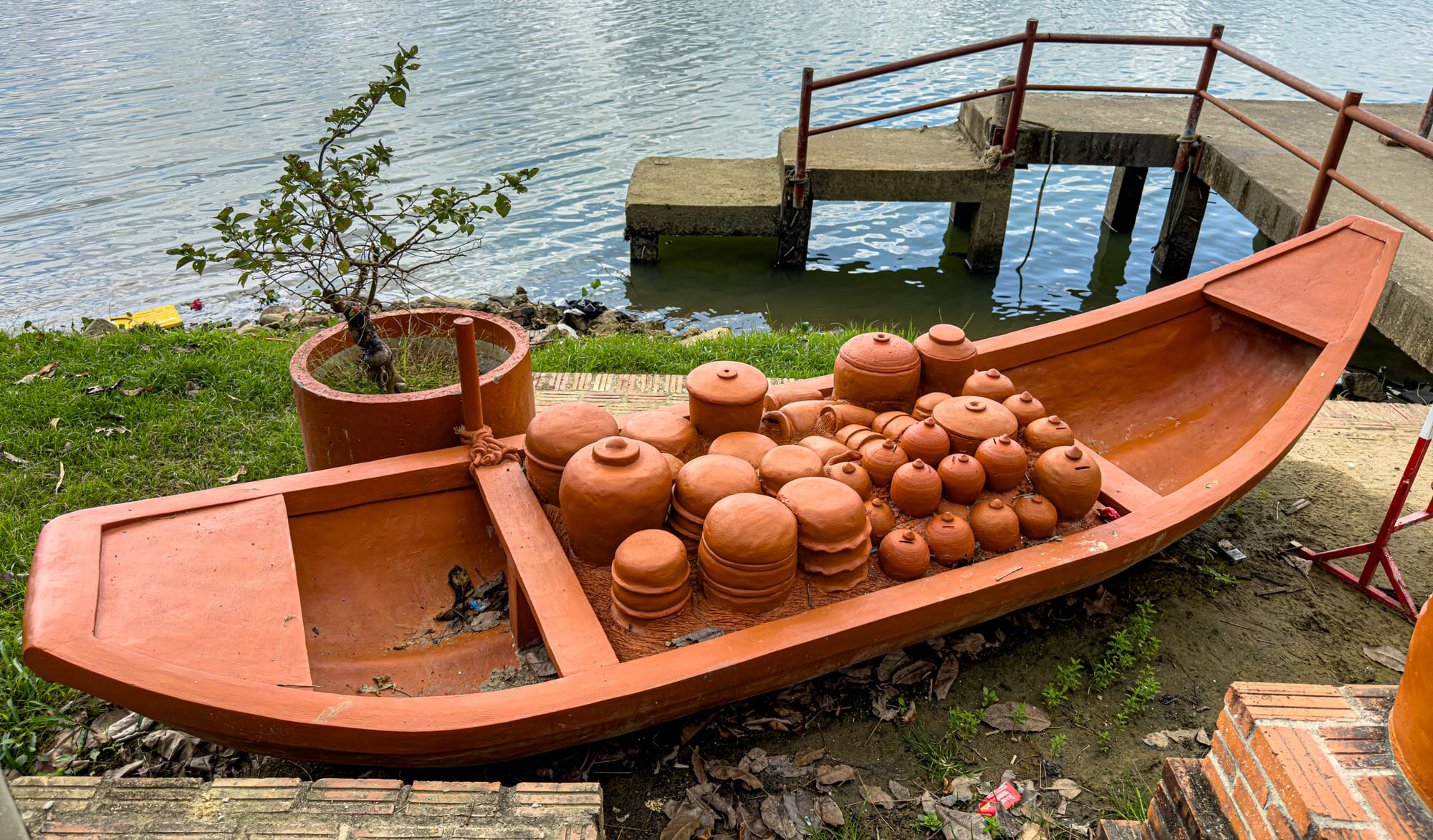
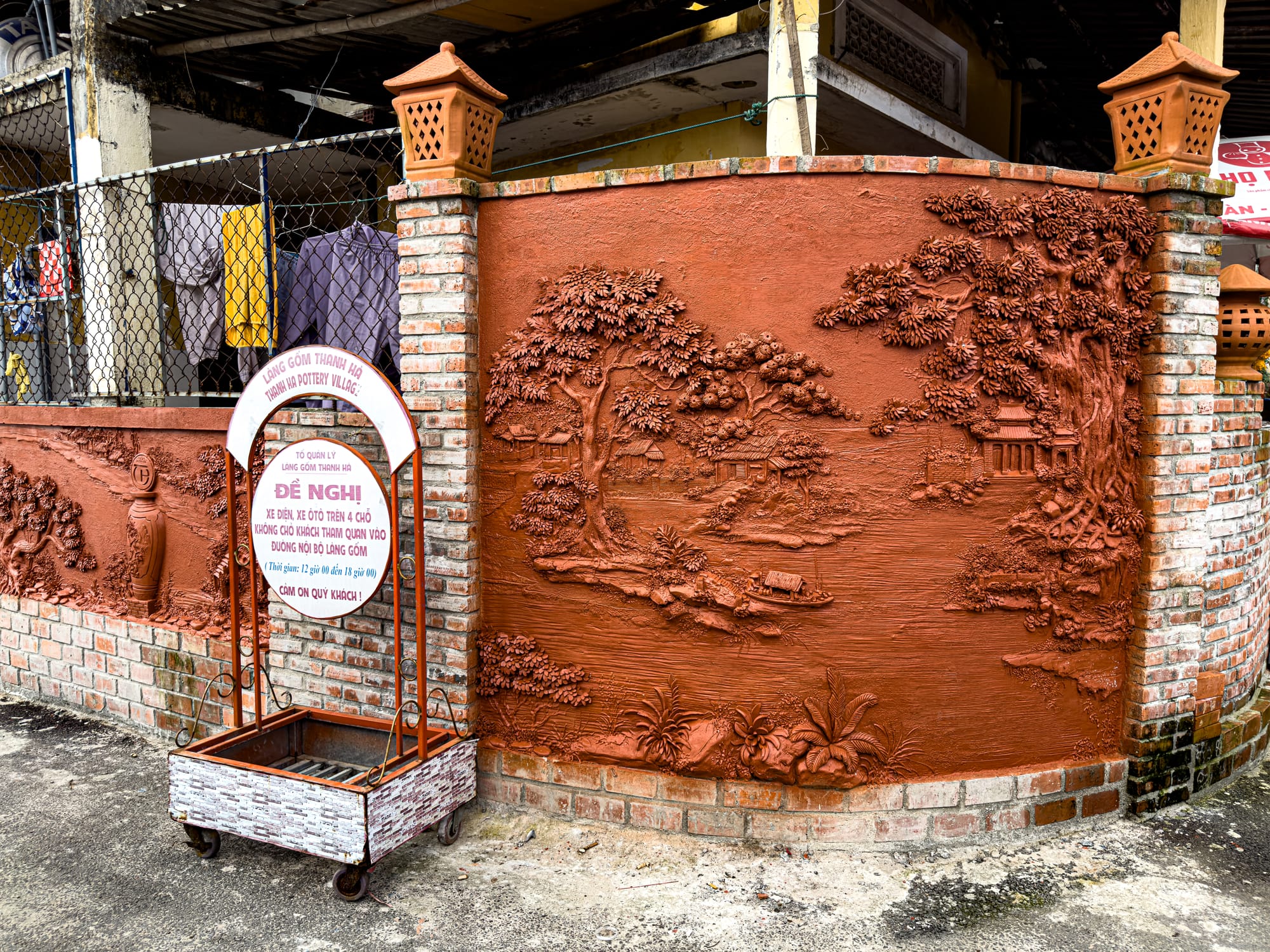
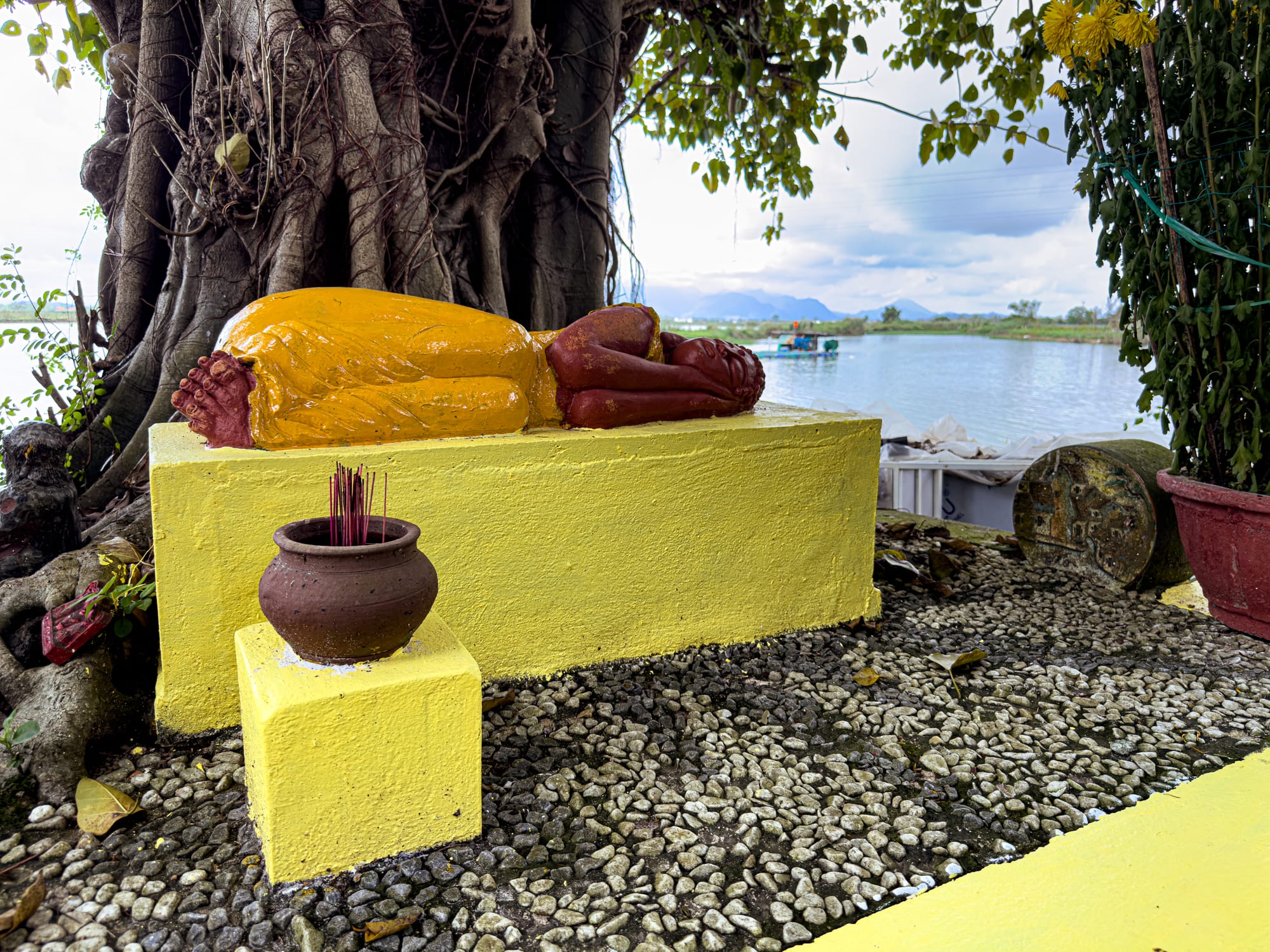
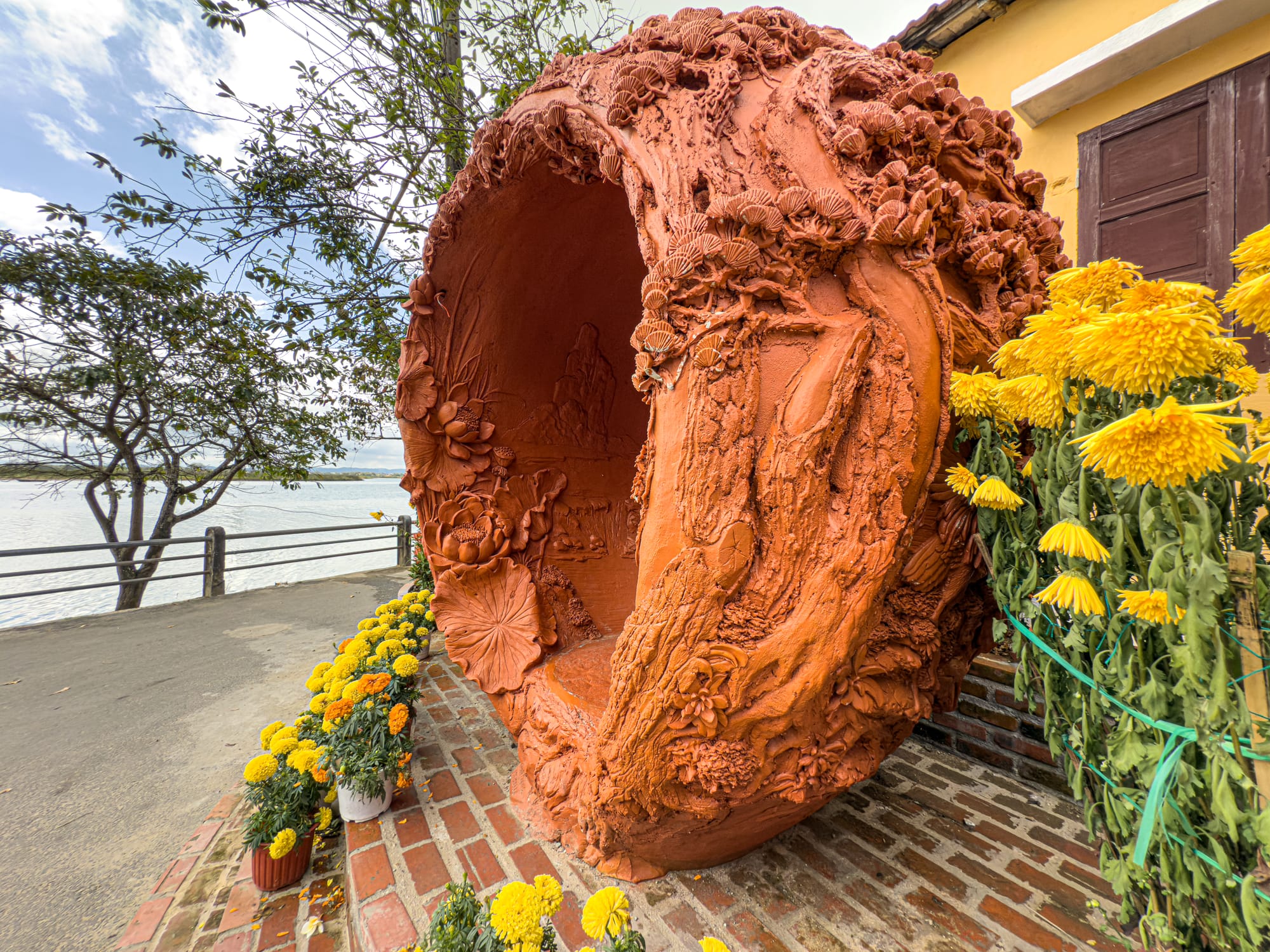
Terracotta murals and sculptures line the riverside paths of Thanh Hà Pottery Village in Hội An
Even now, walking through the village, you see households mixing clay in preparation for shaping, cutting it into workable blocks, and setting it aside for potters to mold. This is a craft passed from generation to generation, often kept alive by women who continue to throw pots by hand on foot-powered wheels. The wheel is spun with a rhythmic kick, the clay is centered, and fingers coax form into being. Watching a potter work here is like stepping into an ancient continuity where no machinery intervenes, only breath, body, and earth.
Daily life in the village
The first thing you notice in Thanh Hà is the sense of rhythm. The streets are lined with kilns and open-air drying racks, with pots and vessels laid out in the sun. Clay whistles shaped like animals are stacked in baskets, waiting for children’s laughter to animate them. Some homes display rows of roof tiles, reminders that Thanh Hà’s craft is not only about vessels but also about the very architecture of the region.
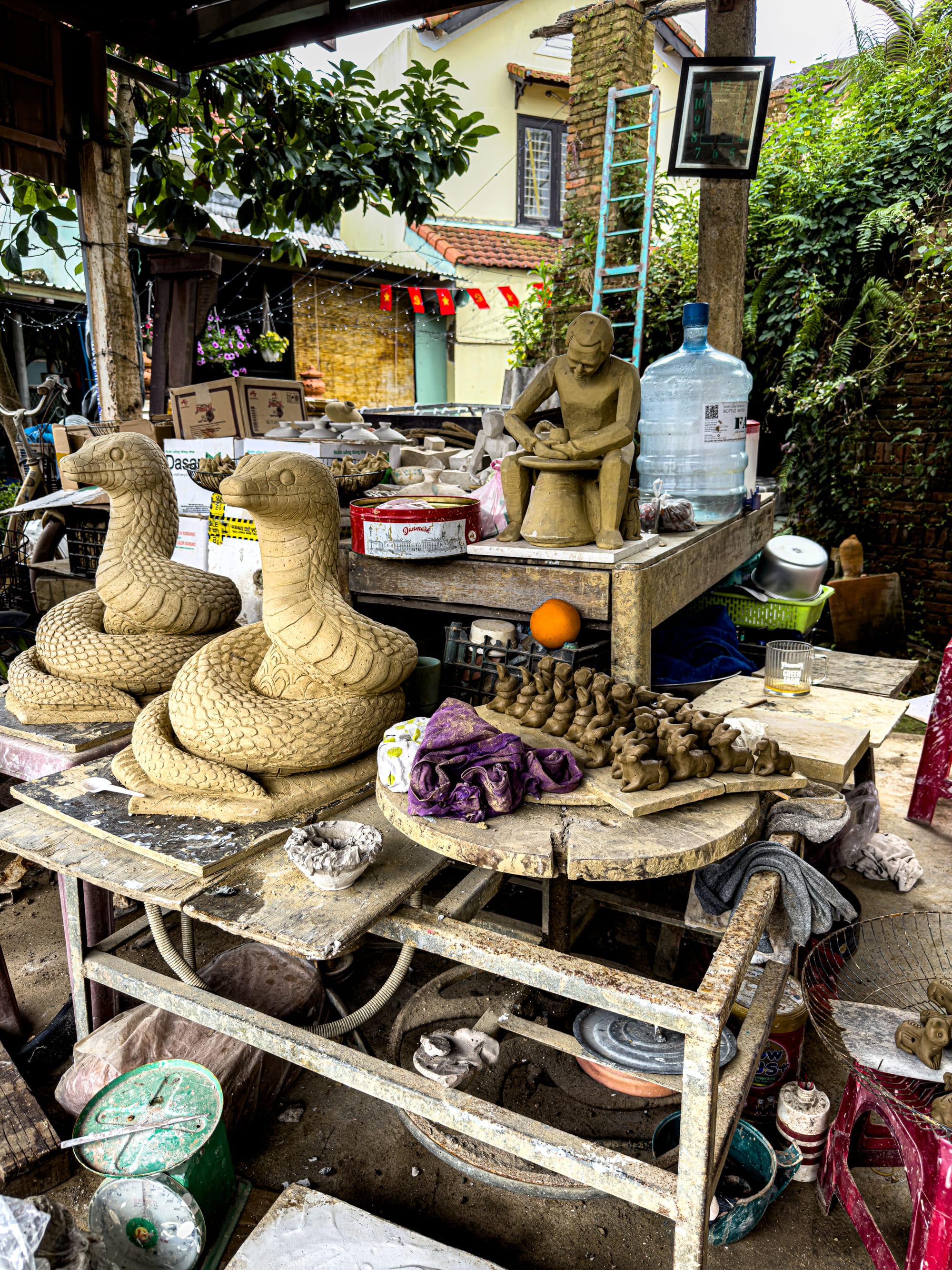
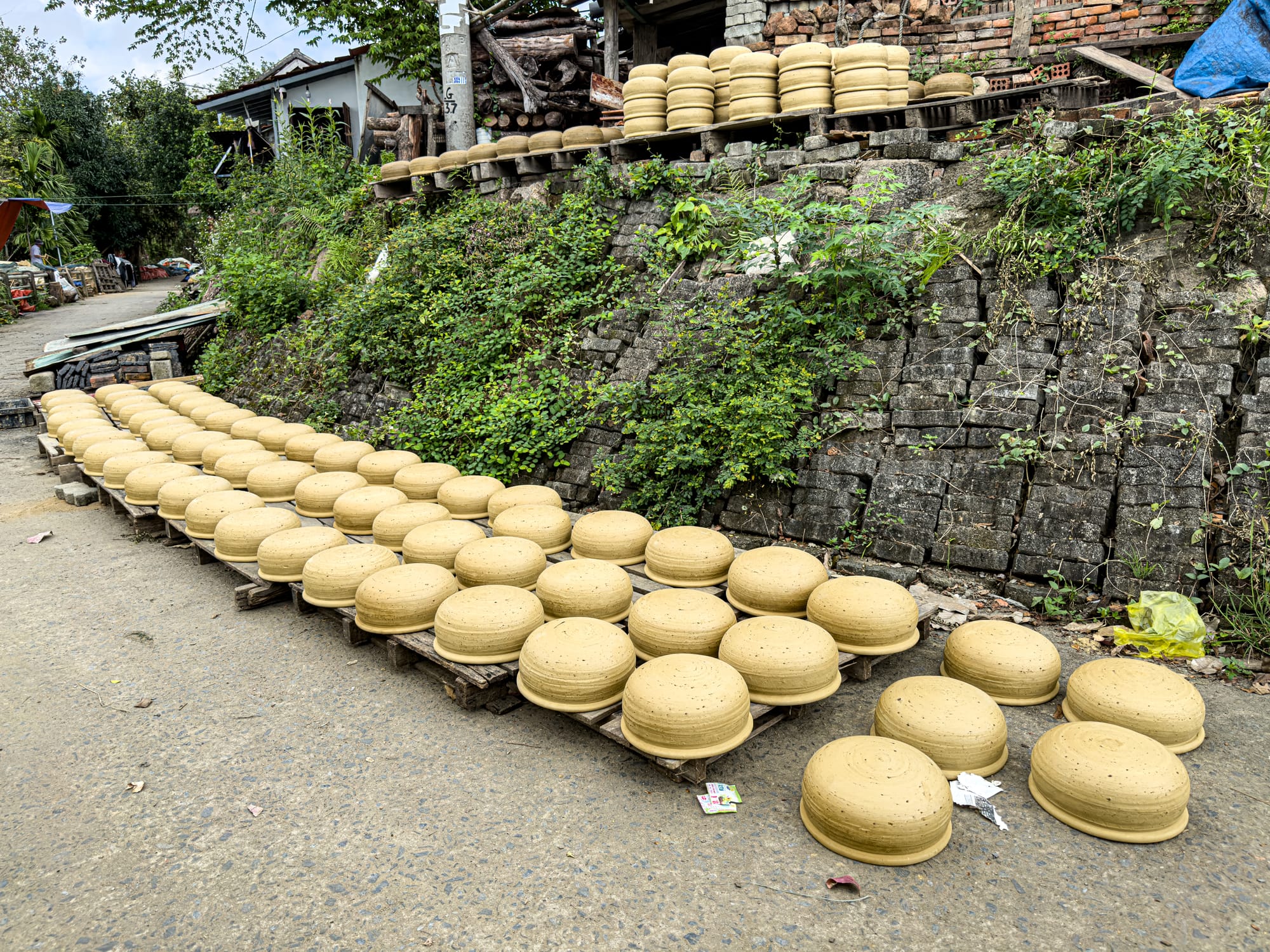
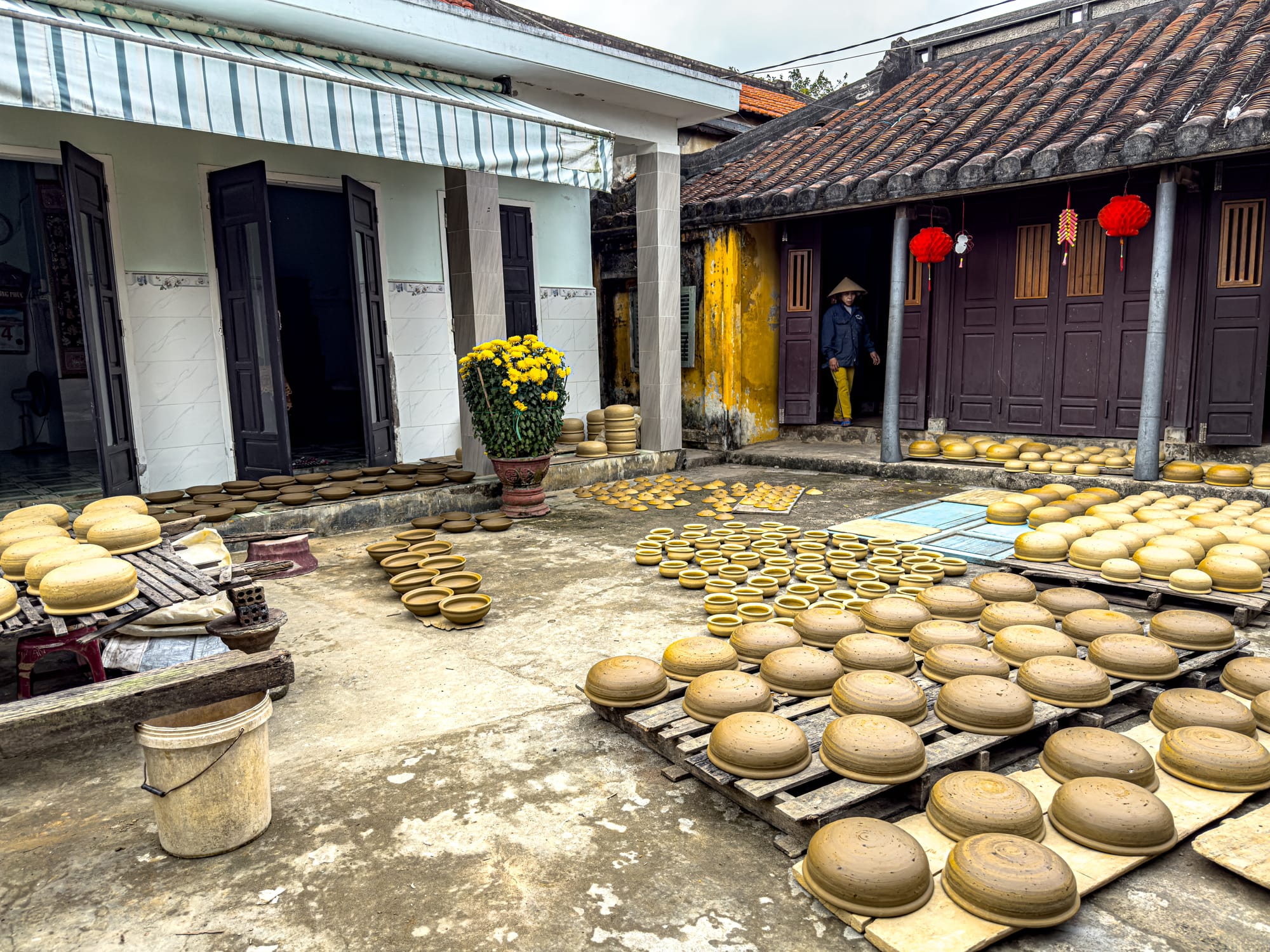
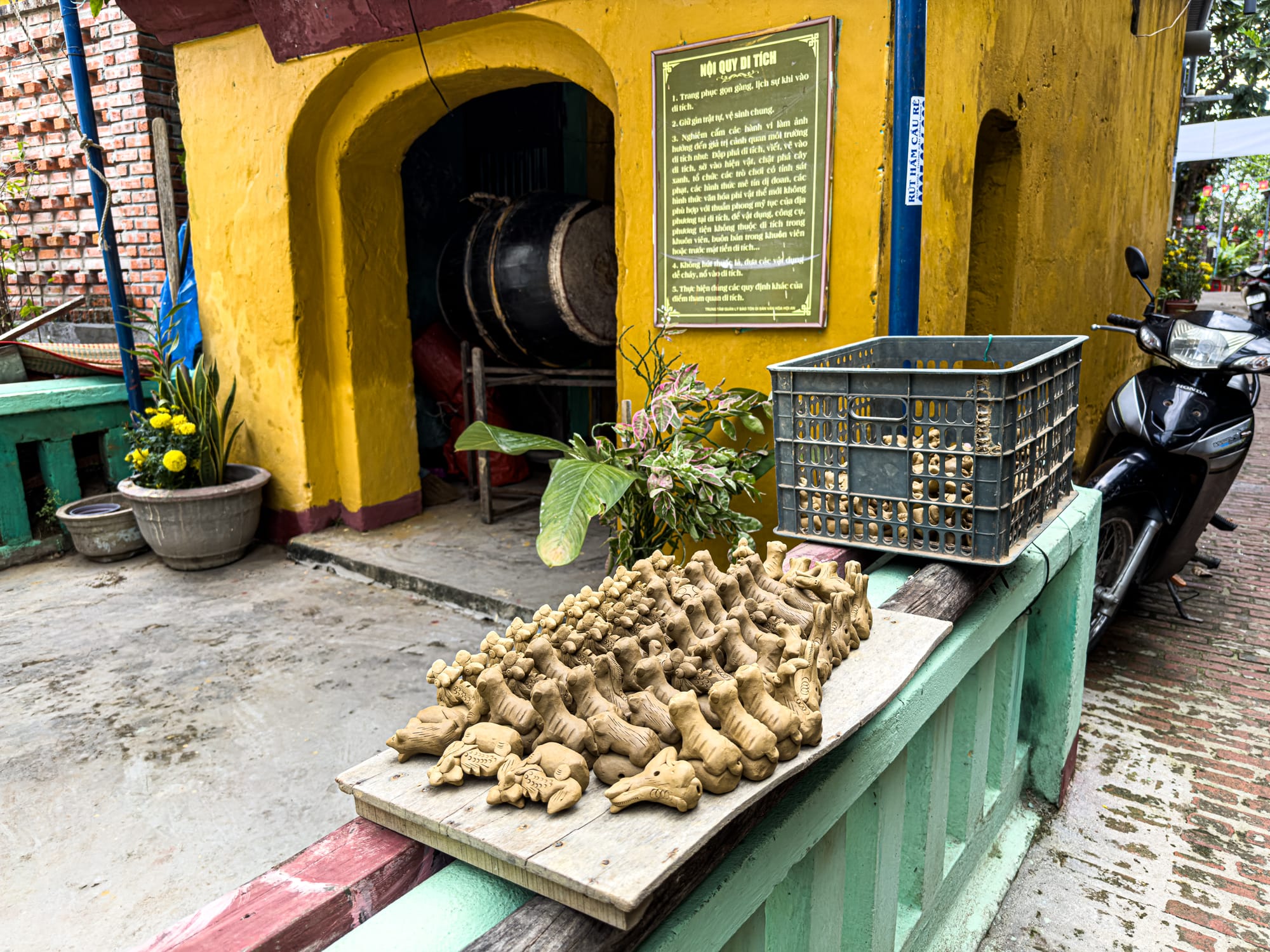
Everyday scenes of clay shaping, drying, and display at Thanh Hà Pottery Village in Hội An
When you pause to observe, you’ll see that daily life here is inseparable from clay. Potters work in shaded courtyards, their hands wet, the air filled with the scent of damp earth. Families gather to glaze or prepare kilns. Even as younger generations explore other livelihoods, many still return to help during busy seasons or festivals, keeping the connection alive. The sound of wheels spinning and fire crackling is part of the everyday atmosphere.
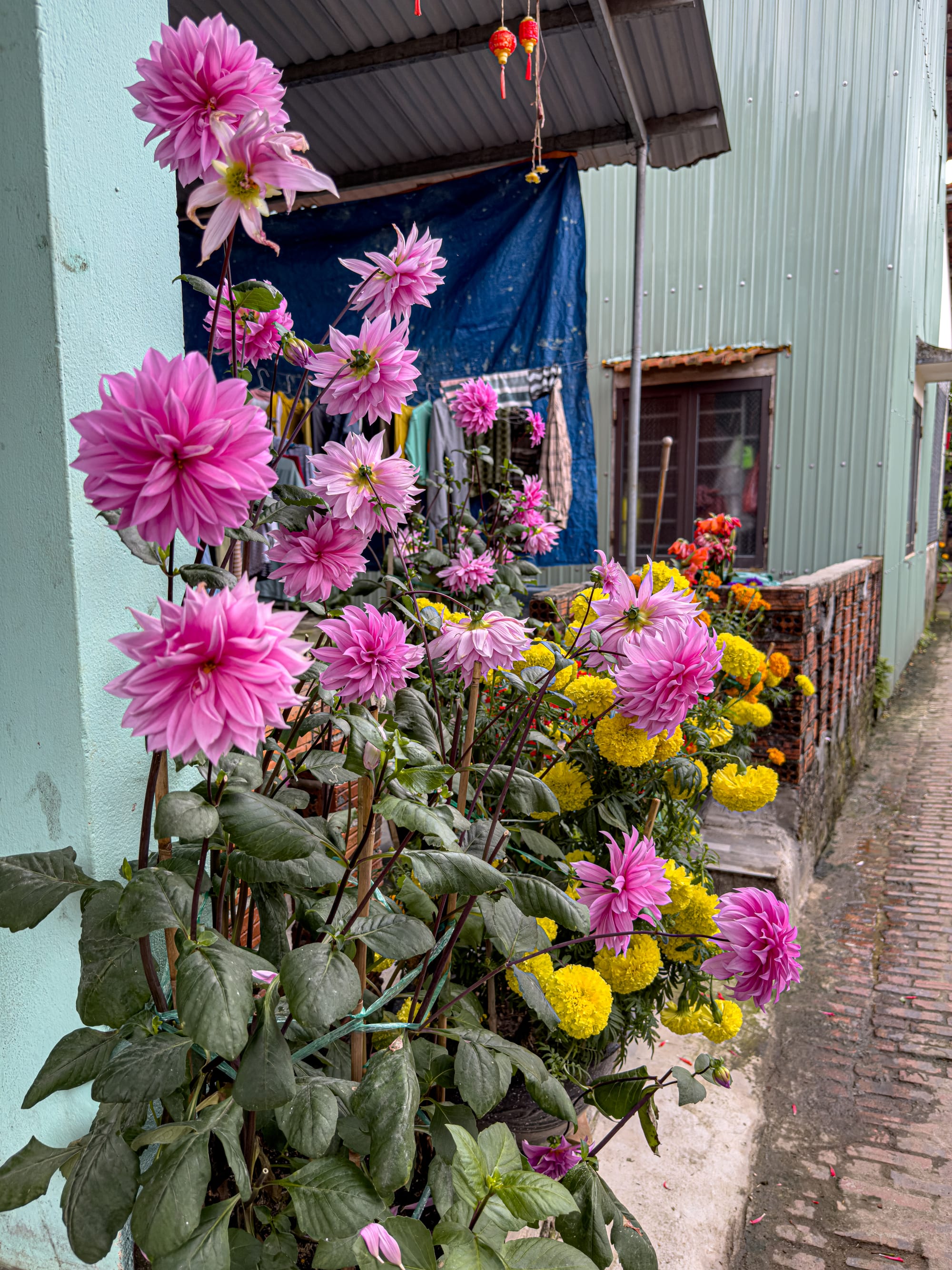
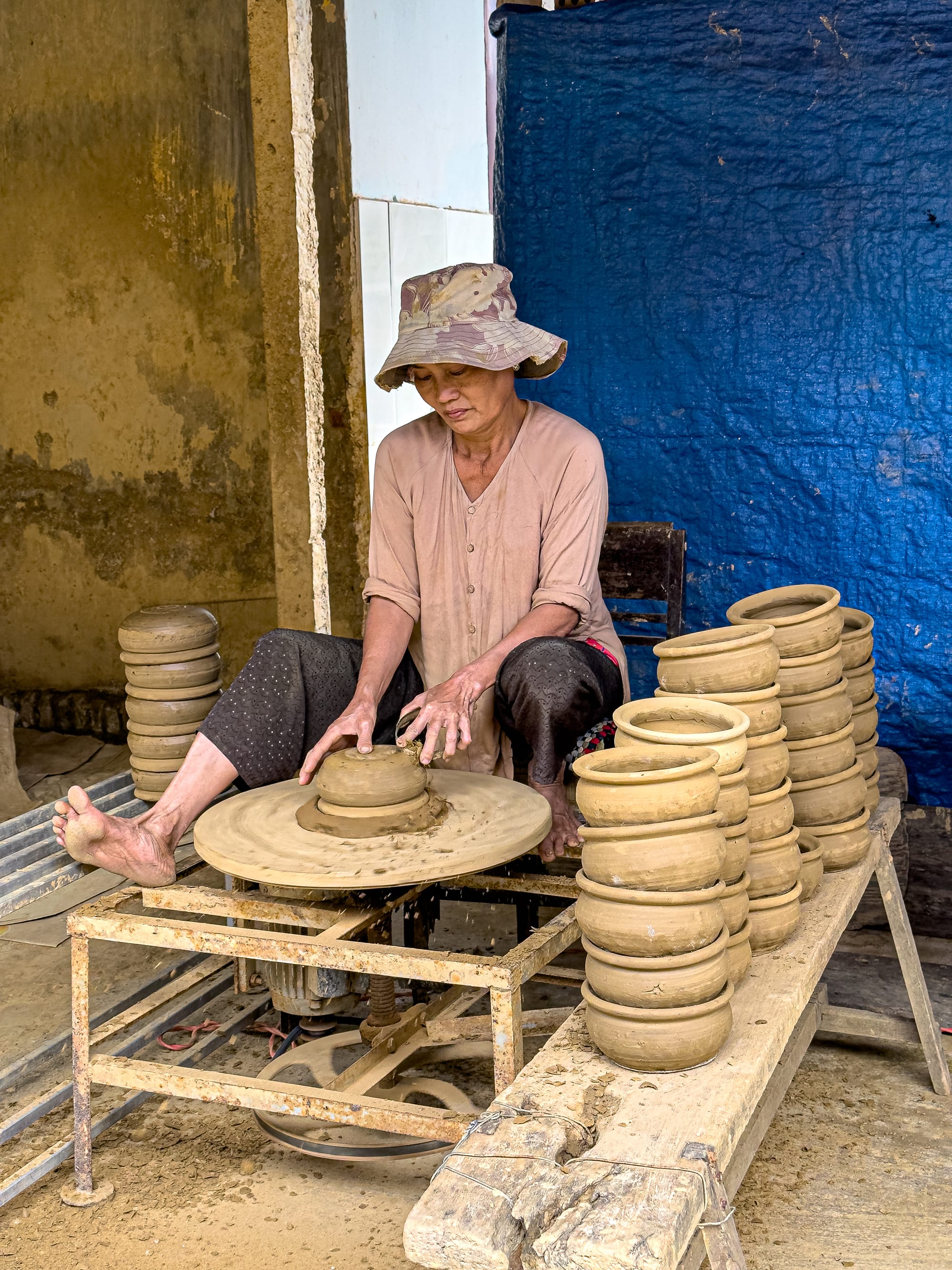
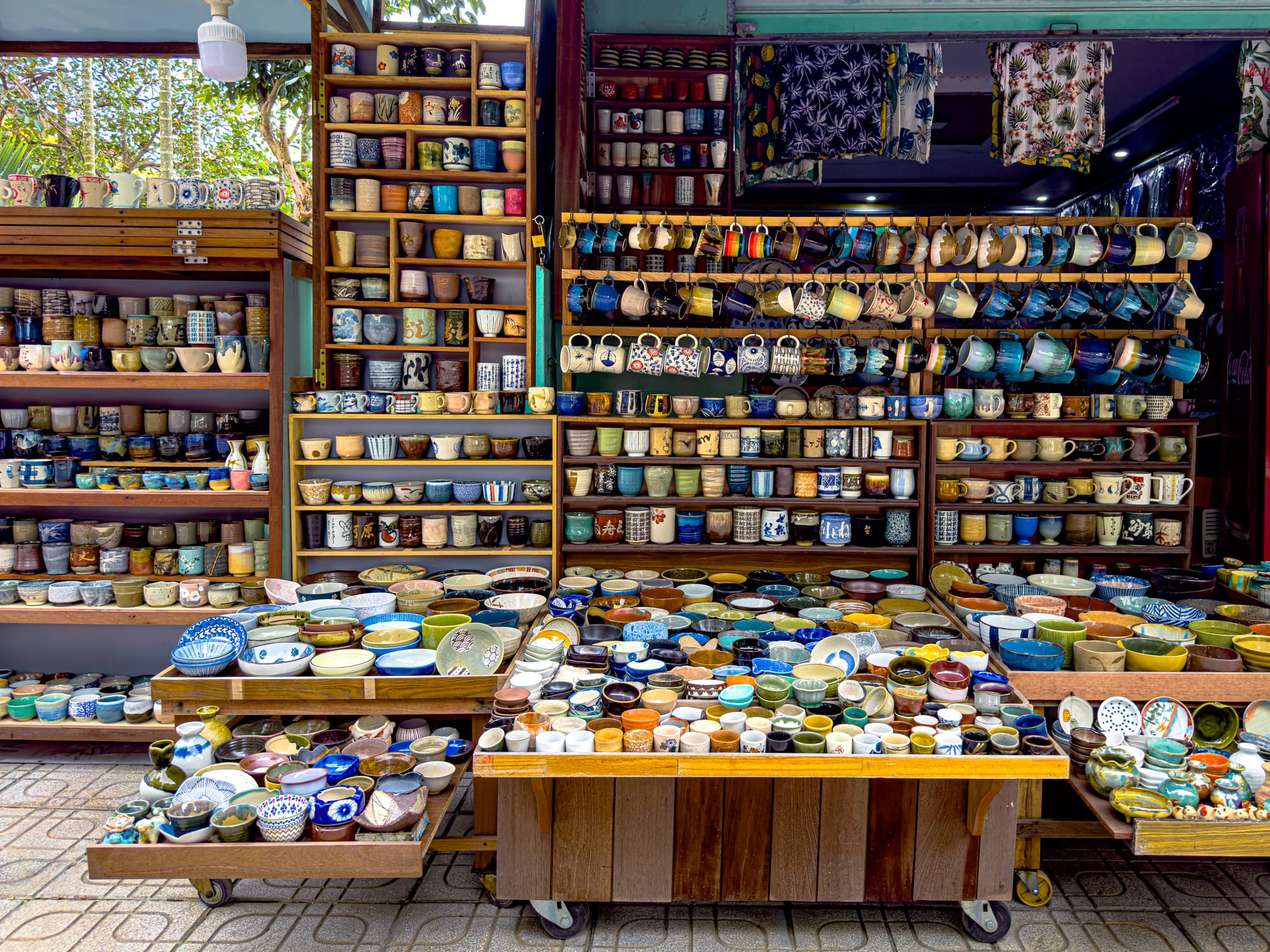
Rows of freshly shaped pots sit drying in the sun, the village square is animated by stalls of ceramic wares, and the quiet interiors come alive with artists shaping and smoothing clay with practiced movements. The craft inhabits both public and private space—on the street, in the courtyard, and in the home.
Walking through Thanh Hà
Walking through Thanh Hà, one passes a mixture of heritage and livelihood. Old communal houses and family shrines stand alongside workshops. In some places you find clusters of clay figures arranged under trees, where artisans experiment with more sculptural forms. The village is not preserved as a museum piece; it is alive, shifting, and adapting. A walk here is as much about the sensory experience—the warmth of the sun on clay, the cool shade inside workshops, the texture of dust underfoot—as it is about observation.
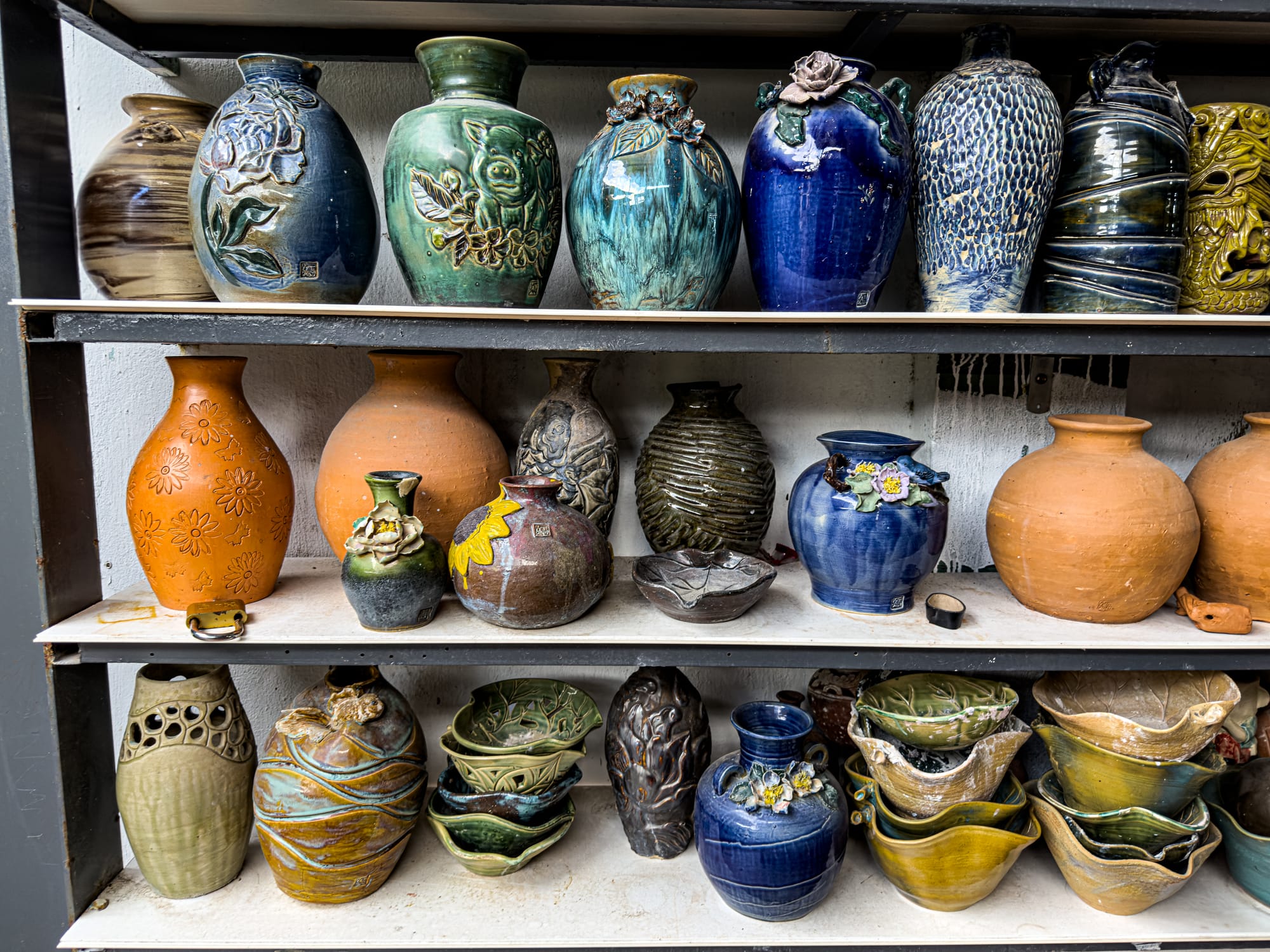
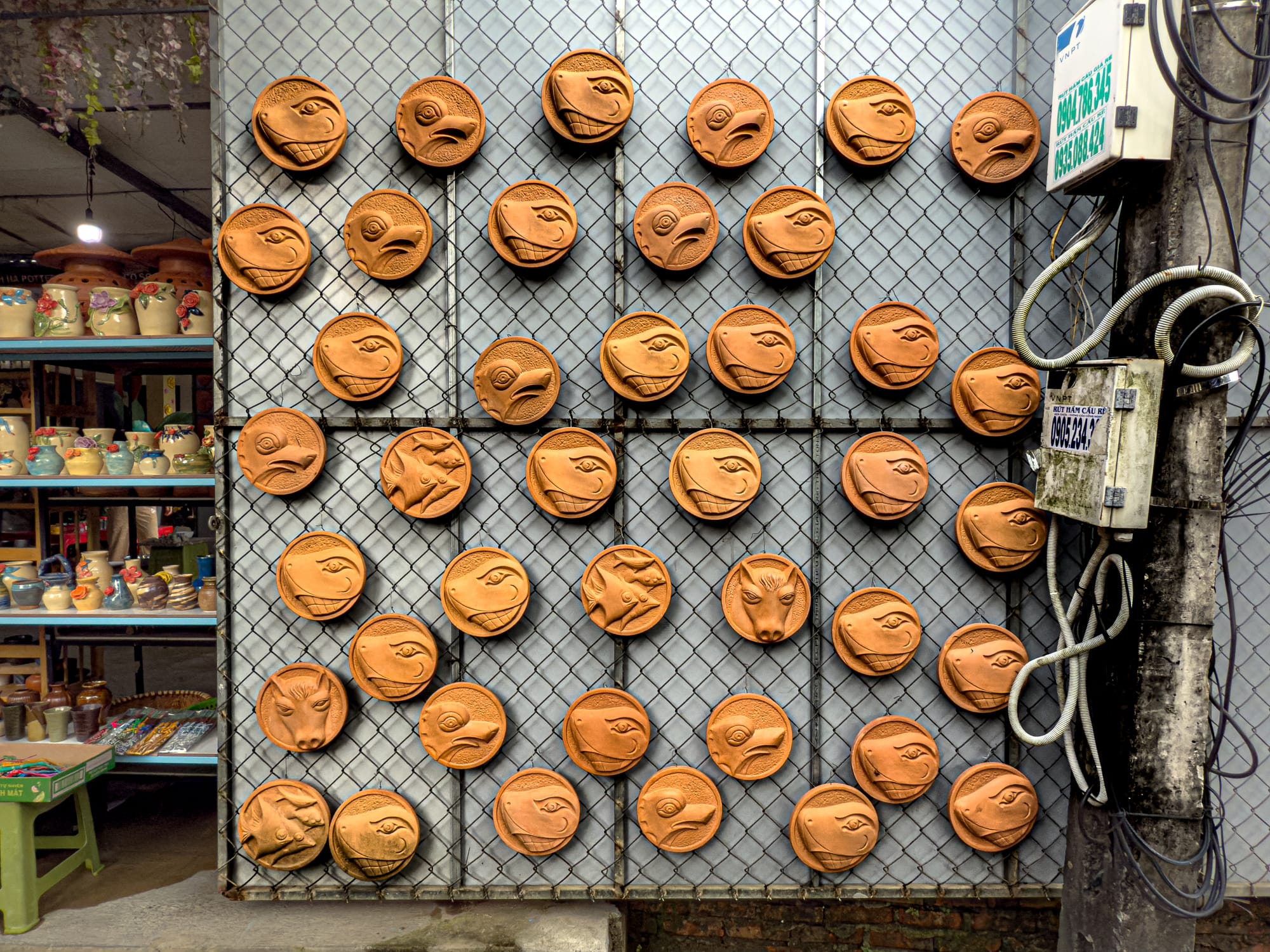
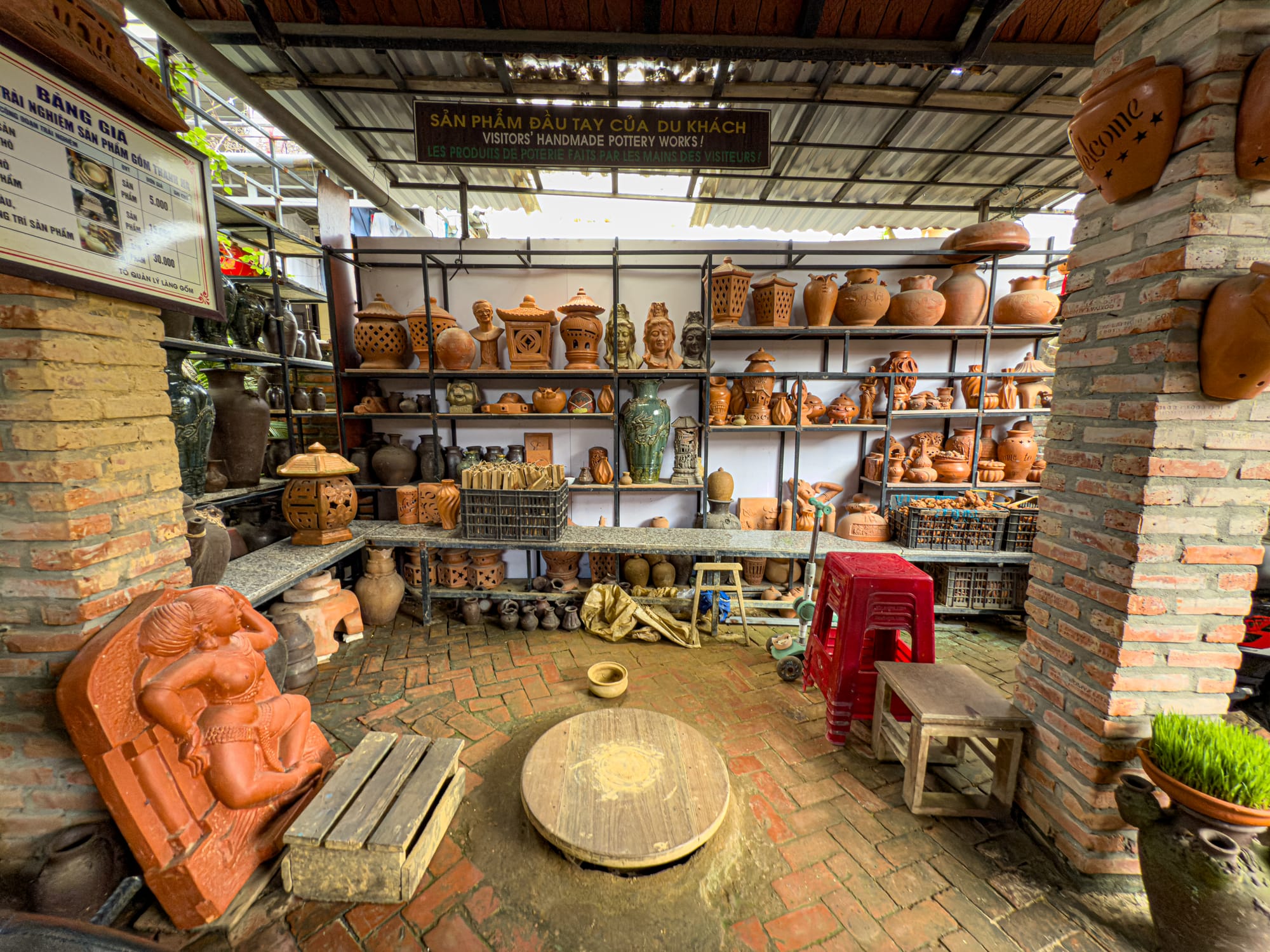
Clay murals and handmade pottery displays at Thanh Hà Pottery Village in Hội An
Visitors are often invited to sit at a wheel and try shaping a small pot. The clay is heavy, unyielding at first, but as you learn to center it, the possibility of form reveals itself. The experience is humbling. You leave not with a perfectly symmetrical pot, but with an embodied understanding of what it means to transform earth into vessel.
Terracotta Park and the Museum of Traditional Vietnamese Pottery
At the heart of Thanh Hà lies one of its most extraordinary features: the Terracotta Park, also known as the Museum of Traditional Vietnamese Pottery. It is both a museum and an open-air landscape where clay is shaped into story. Built with an architectural vision that mirrors the philosophy of clay itself—strong, adaptable, porous—the museum unfolds as both exhibition and environment.
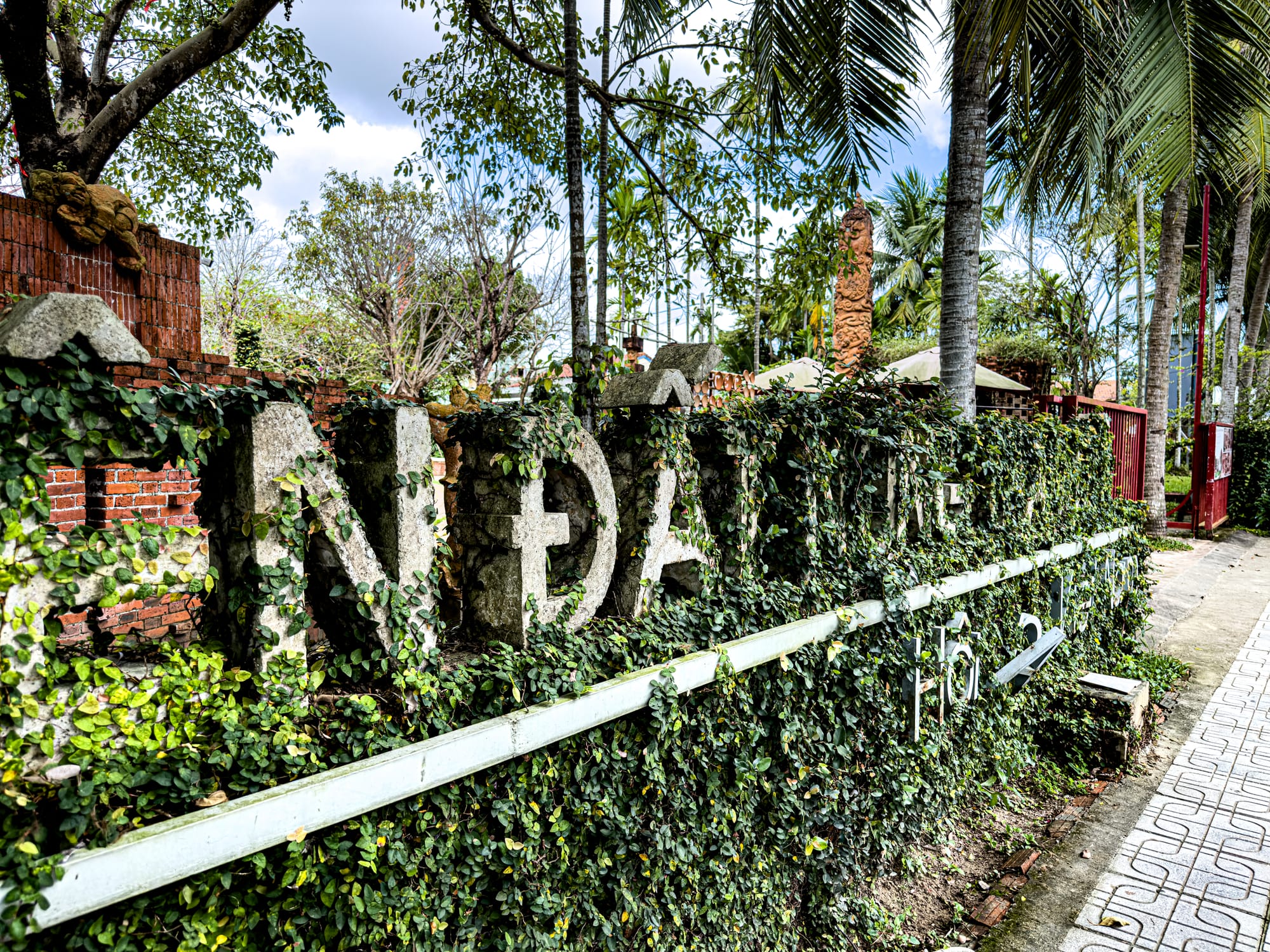
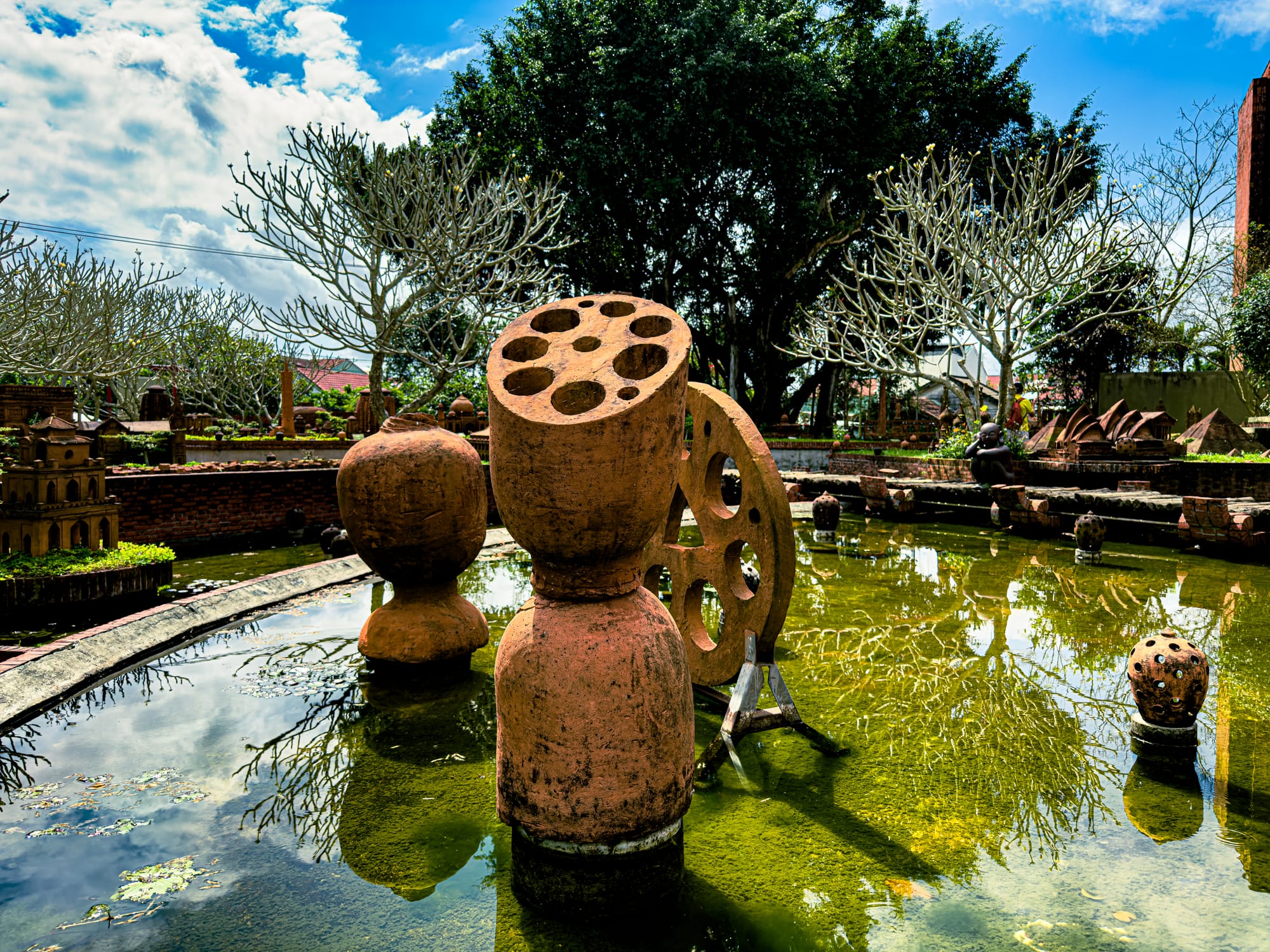
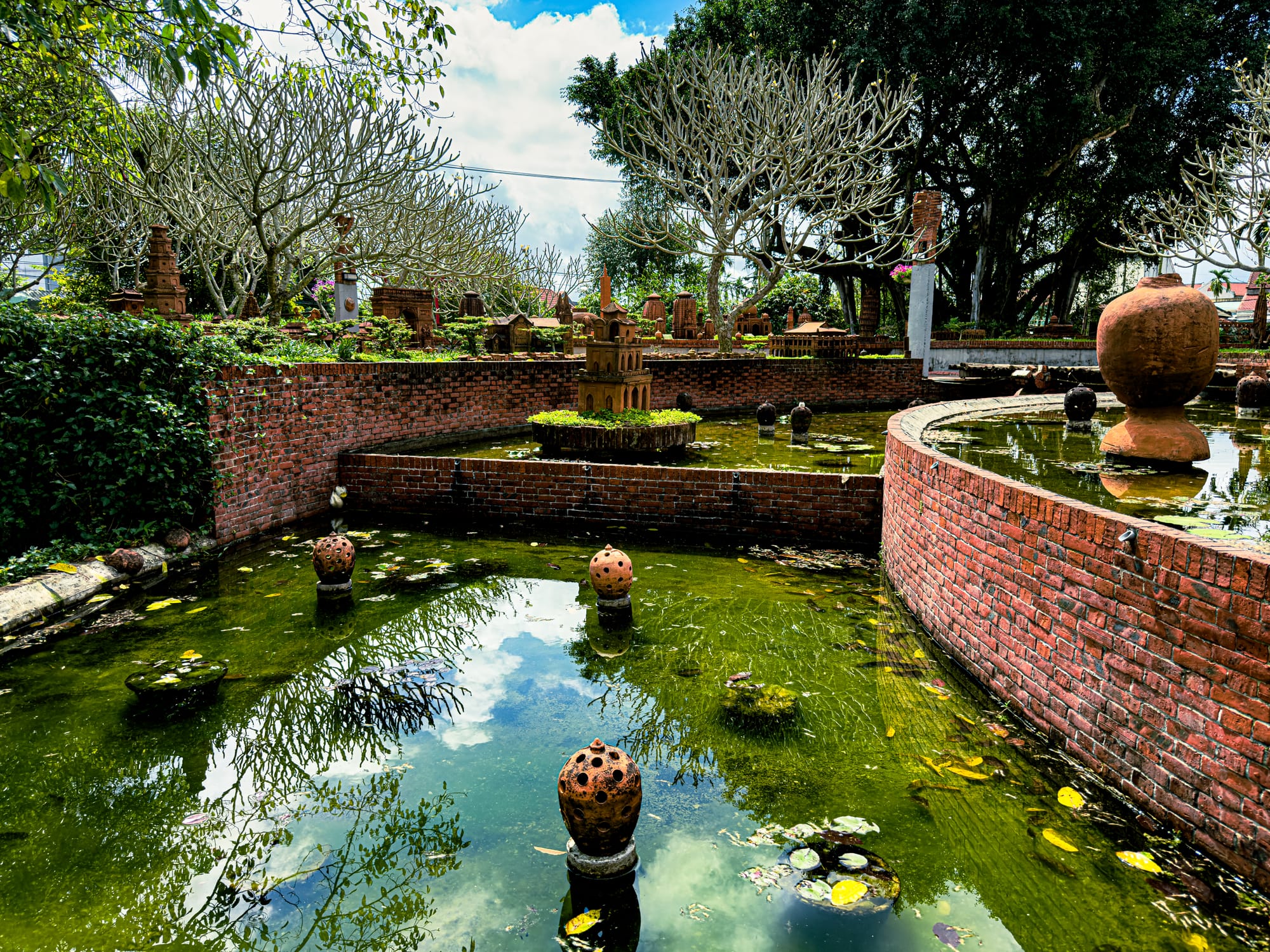
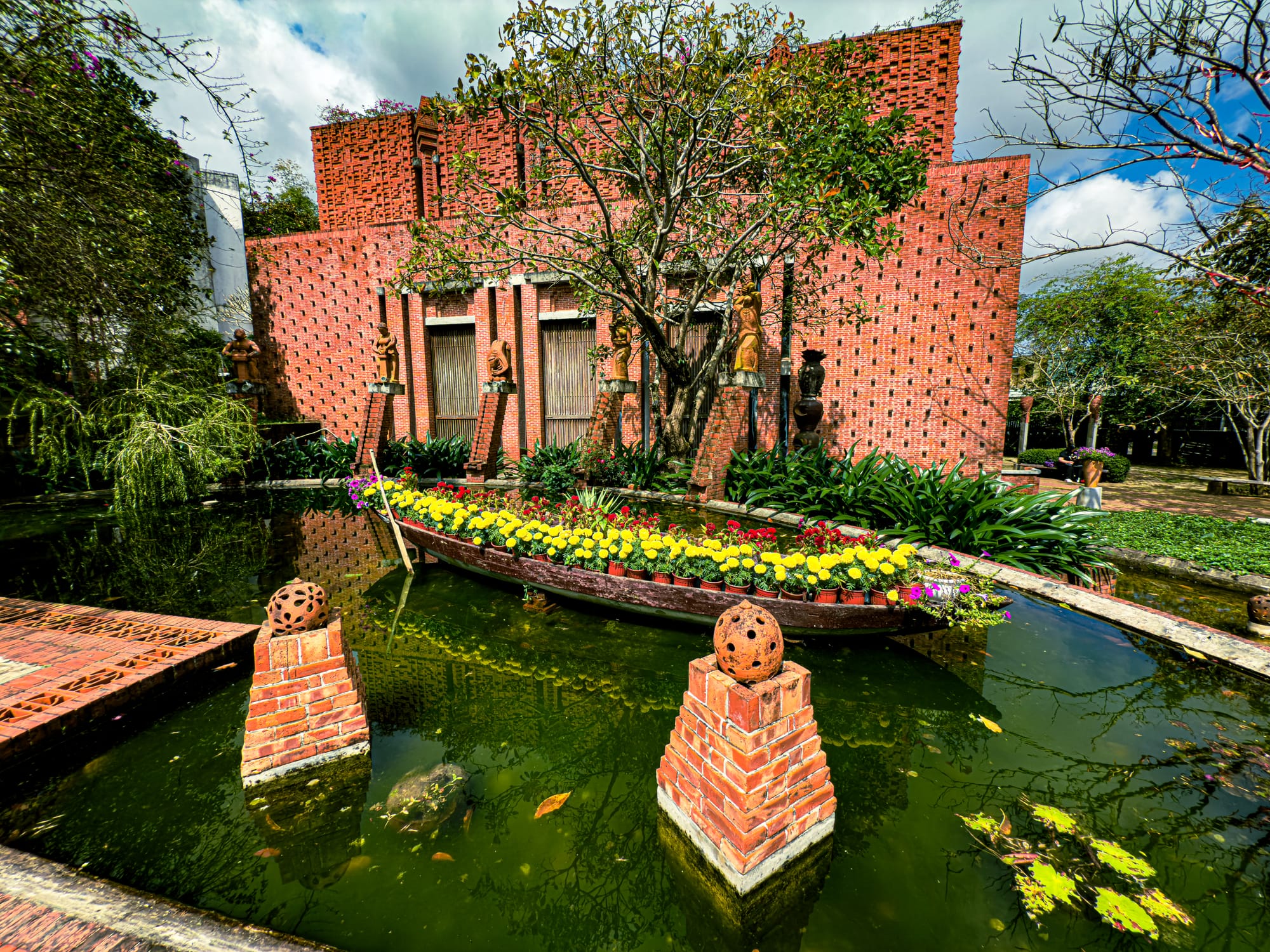
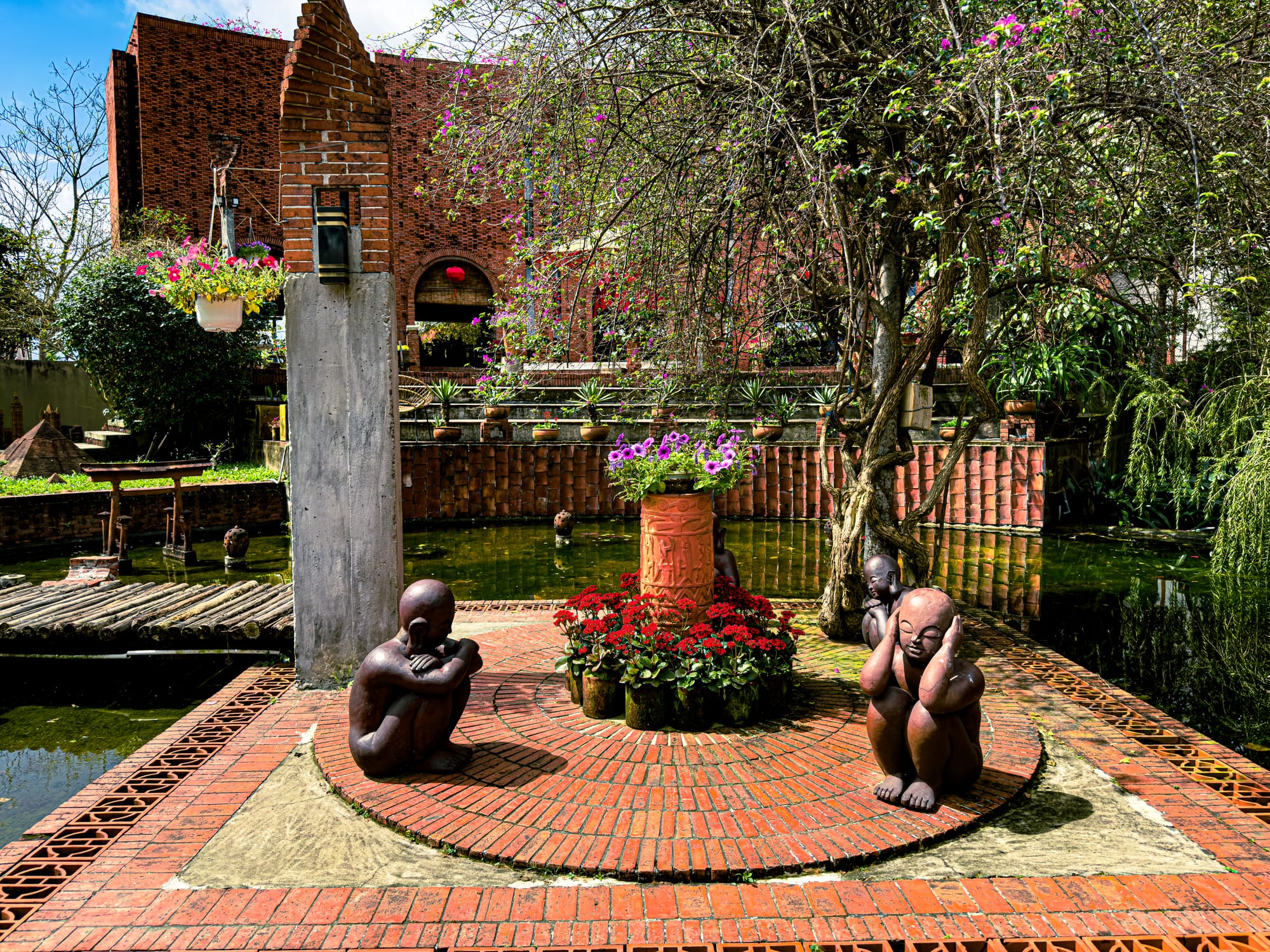
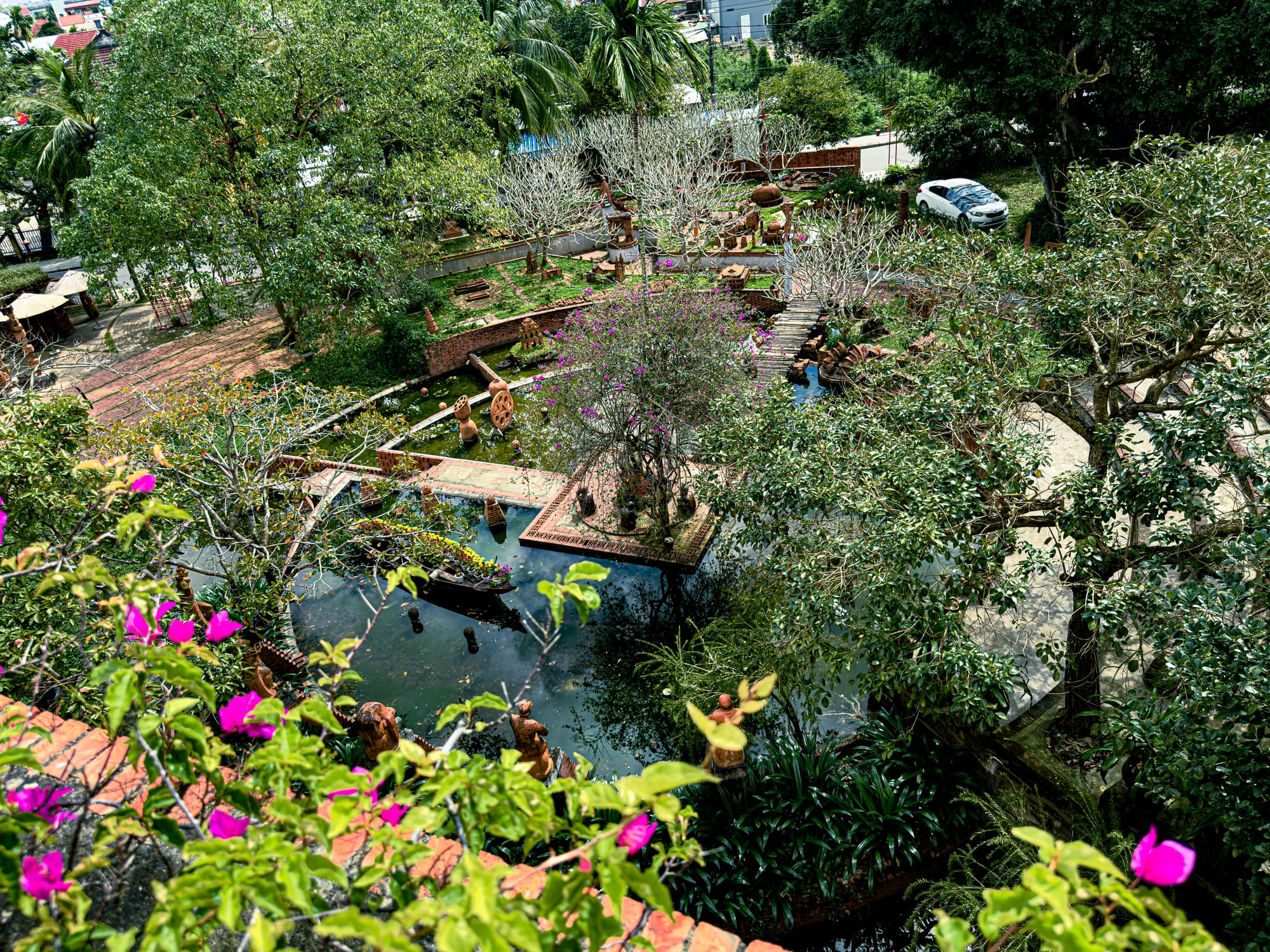
Terracotta ponds, sculptures, and gardens at the museum in Thanh Hà Pottery Village, Hội An
Inside, there are halls filled with clay sculptures. The walls themselves are inscribed with scenes of daily life, carved in clay: market women carrying baskets, fishermen casting nets, families at work. These reliefs are not distant history; they reflect the same rhythms you see outside in the village lanes.
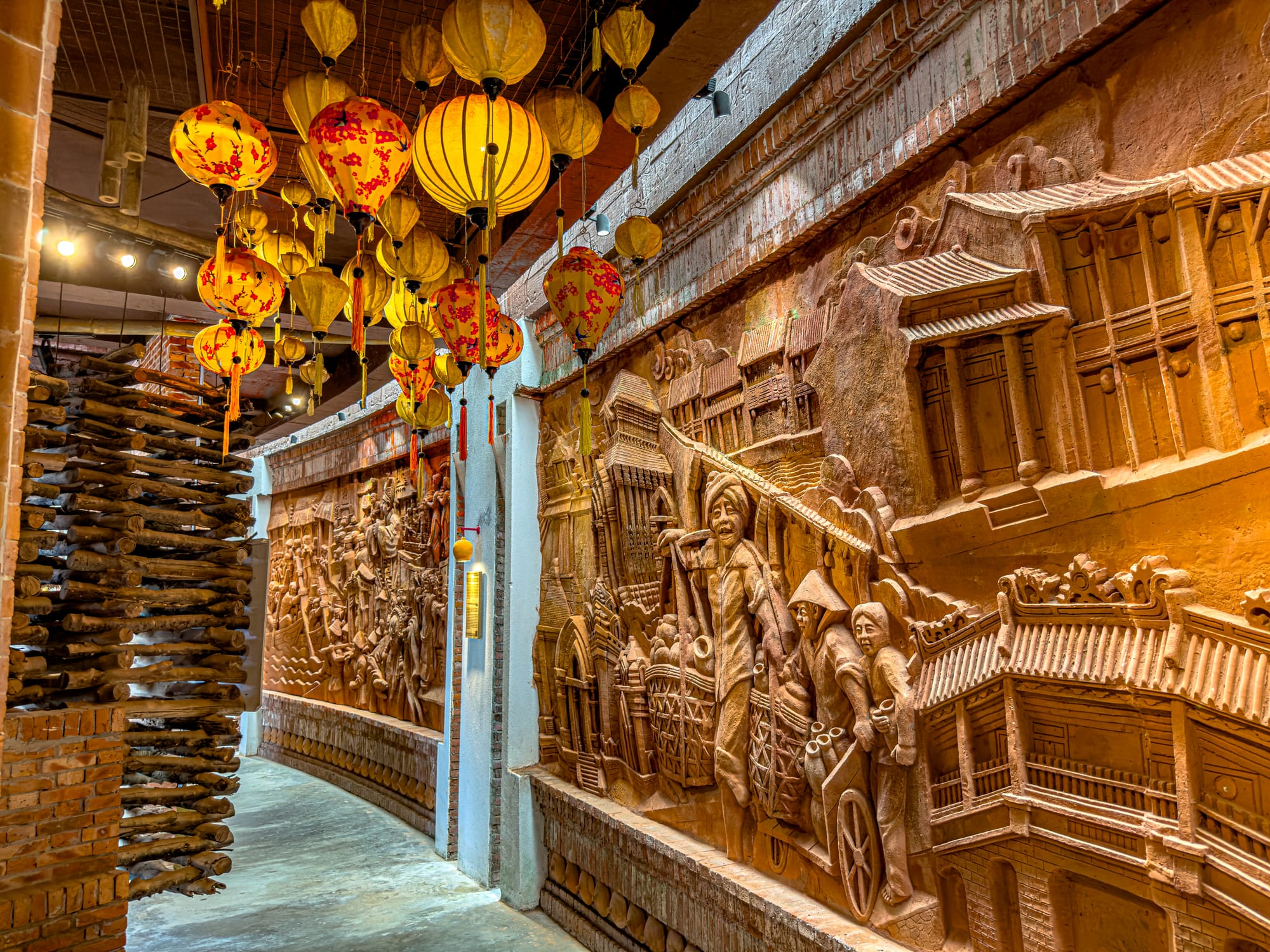
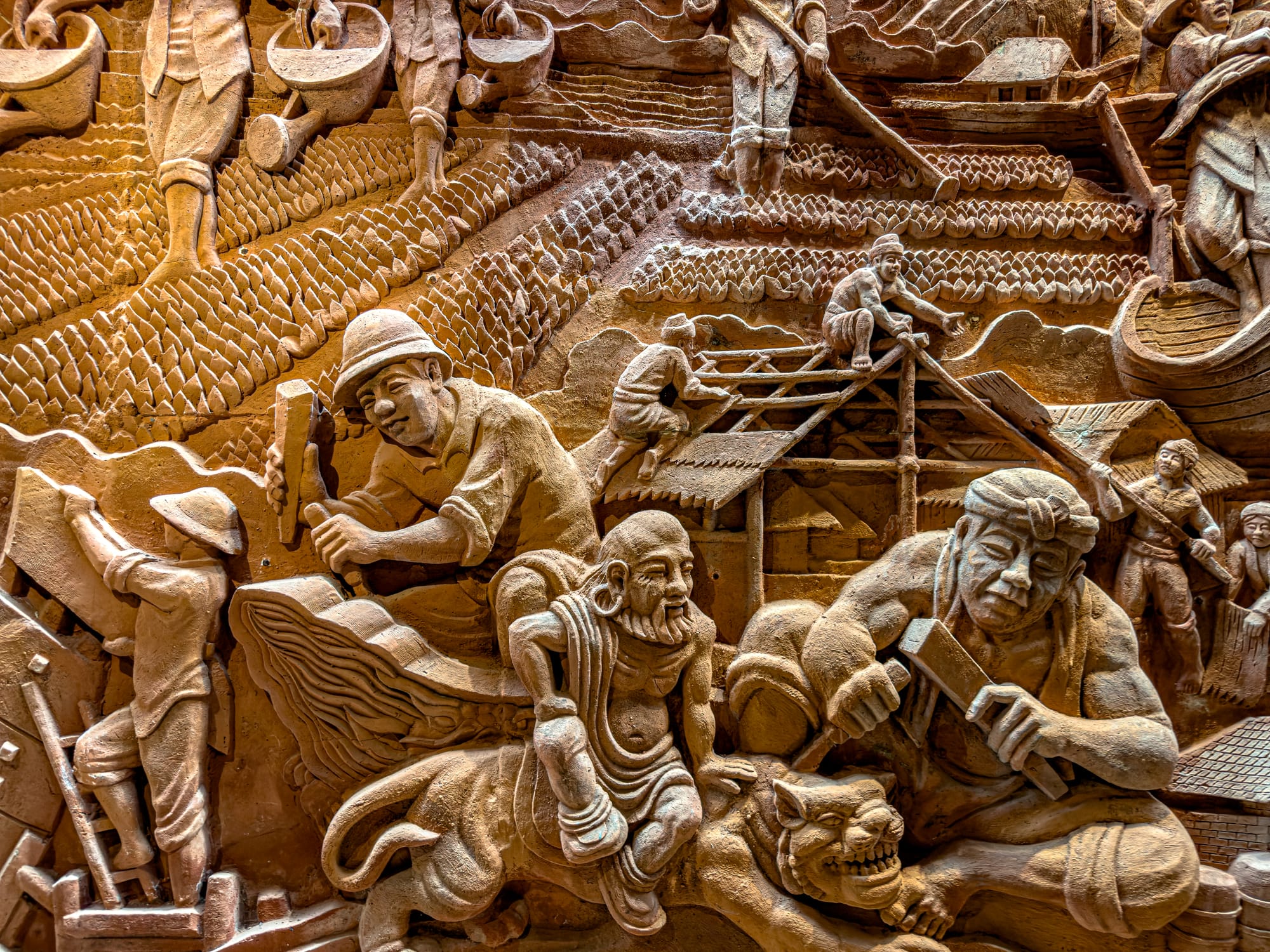
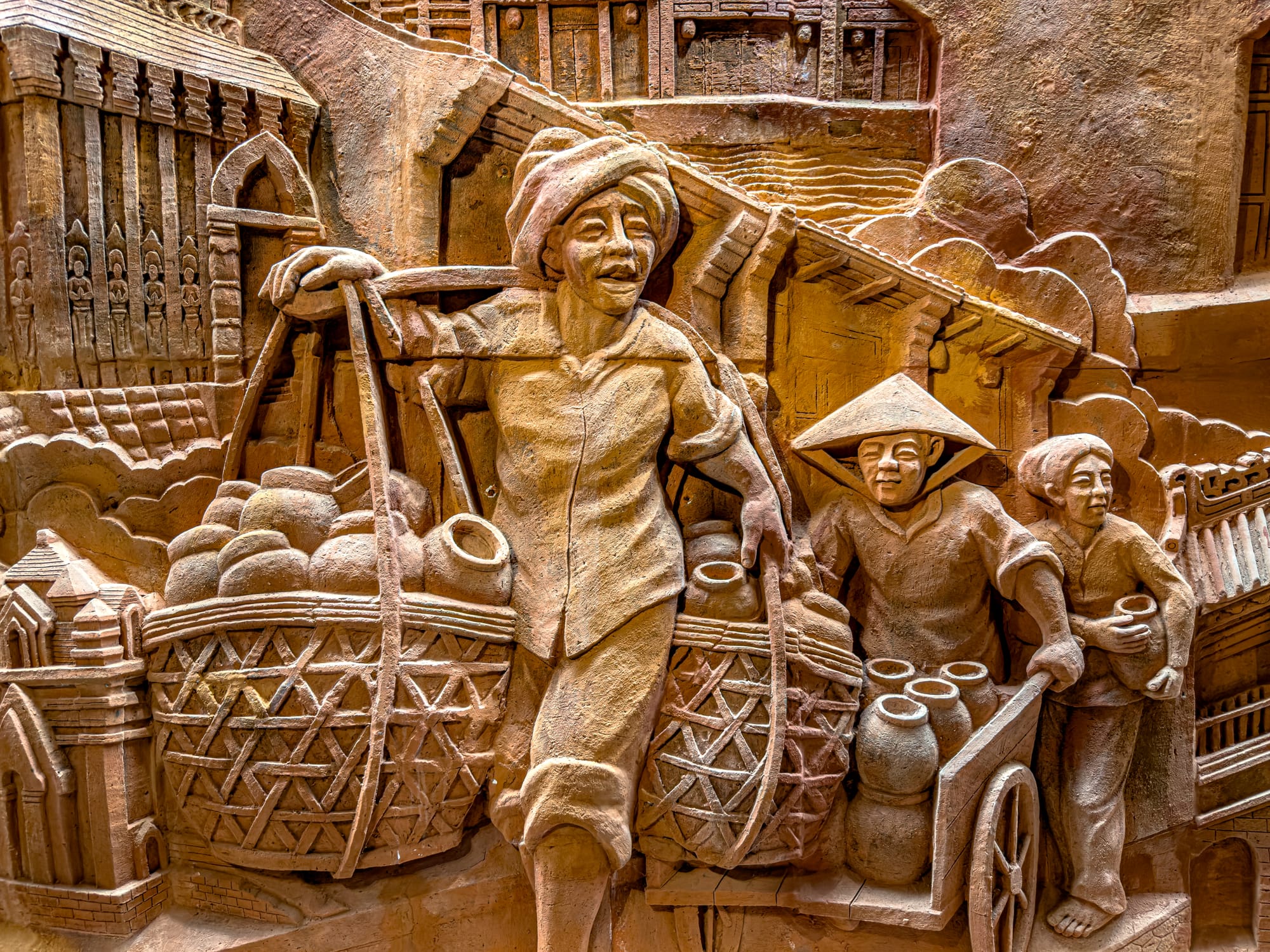
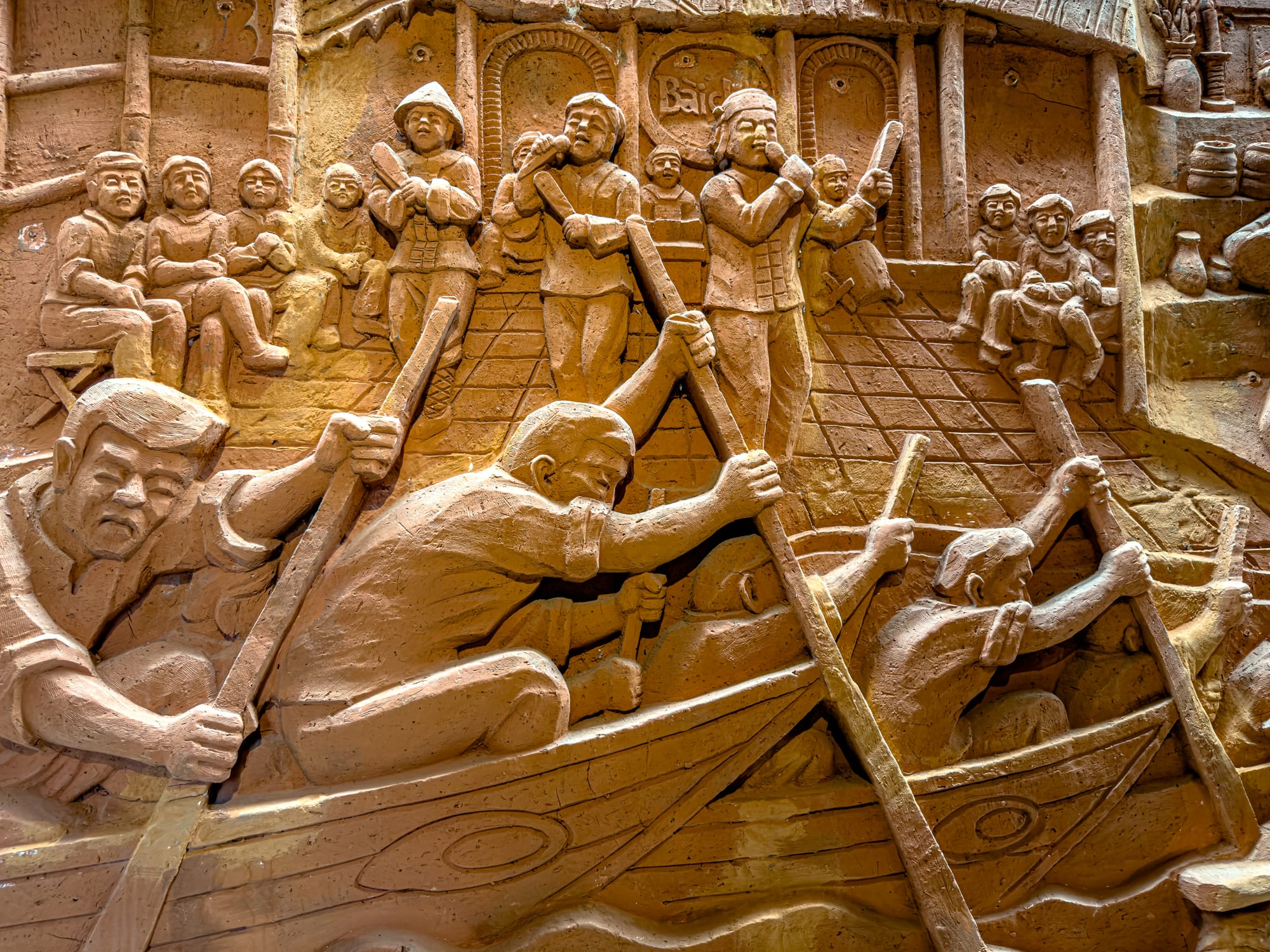
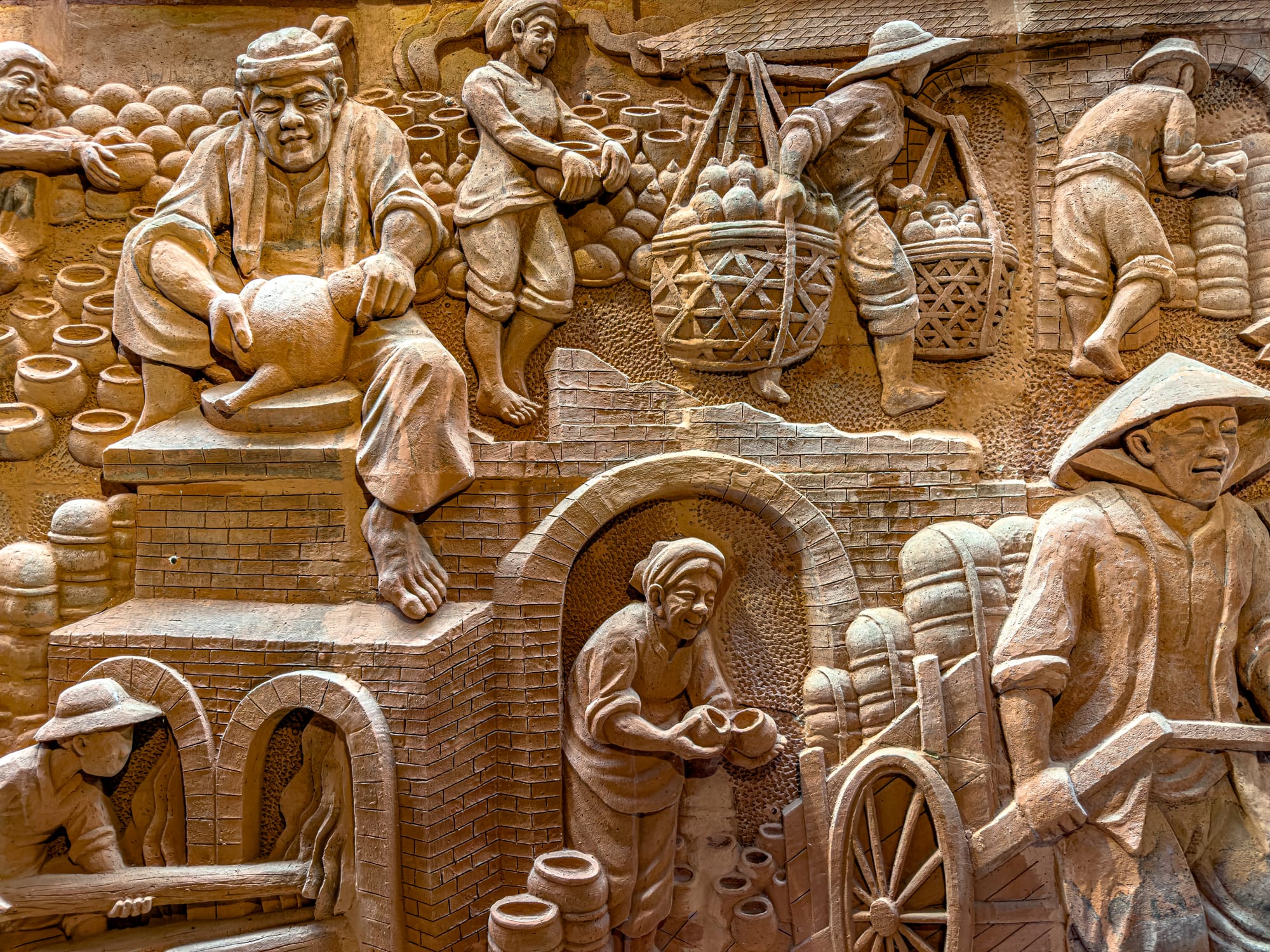
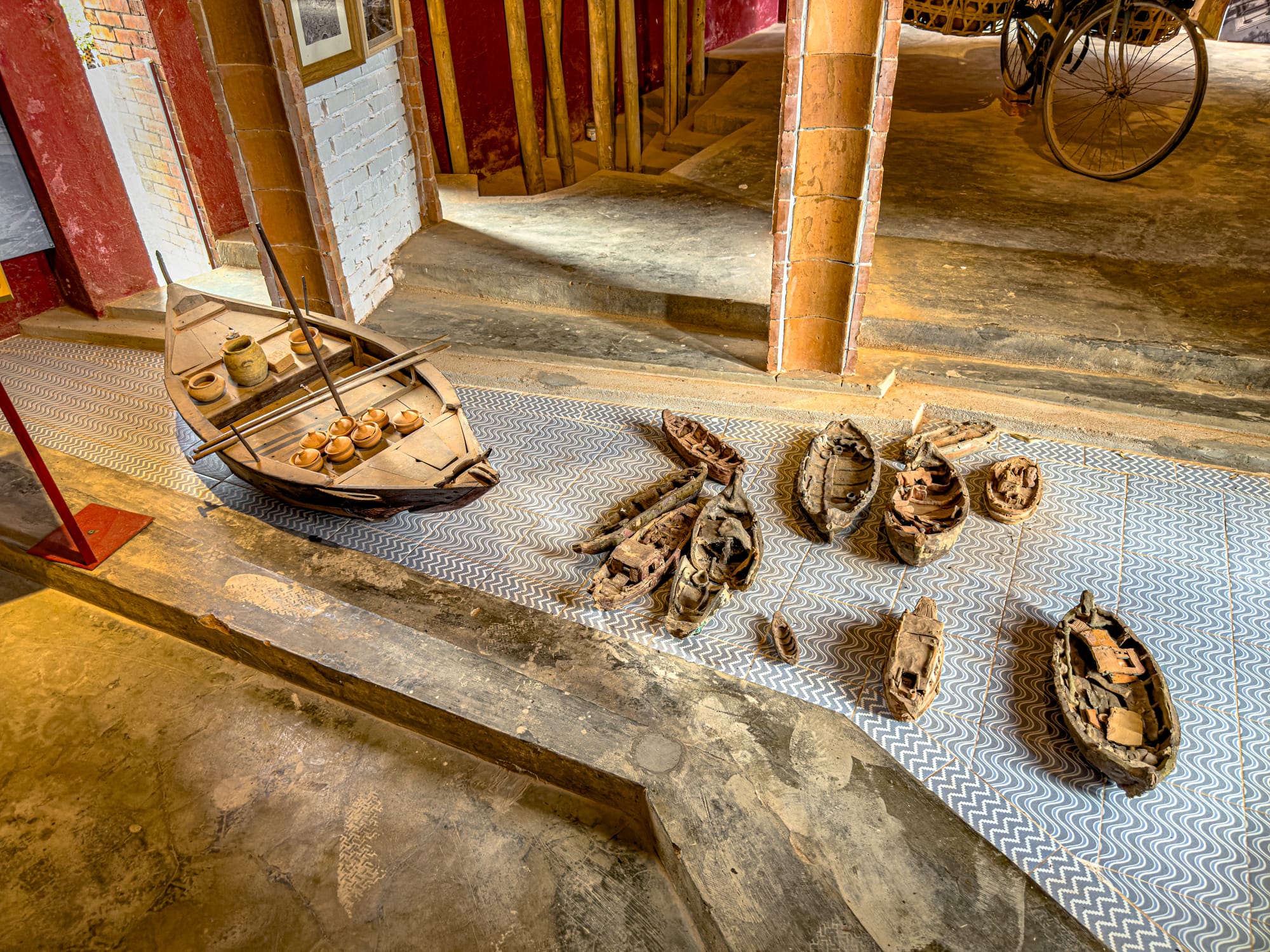
The museum is filled clay statues lined against walls, figures arranged in silent rows, sculptures of mythic creatures staring out with wide eyes.
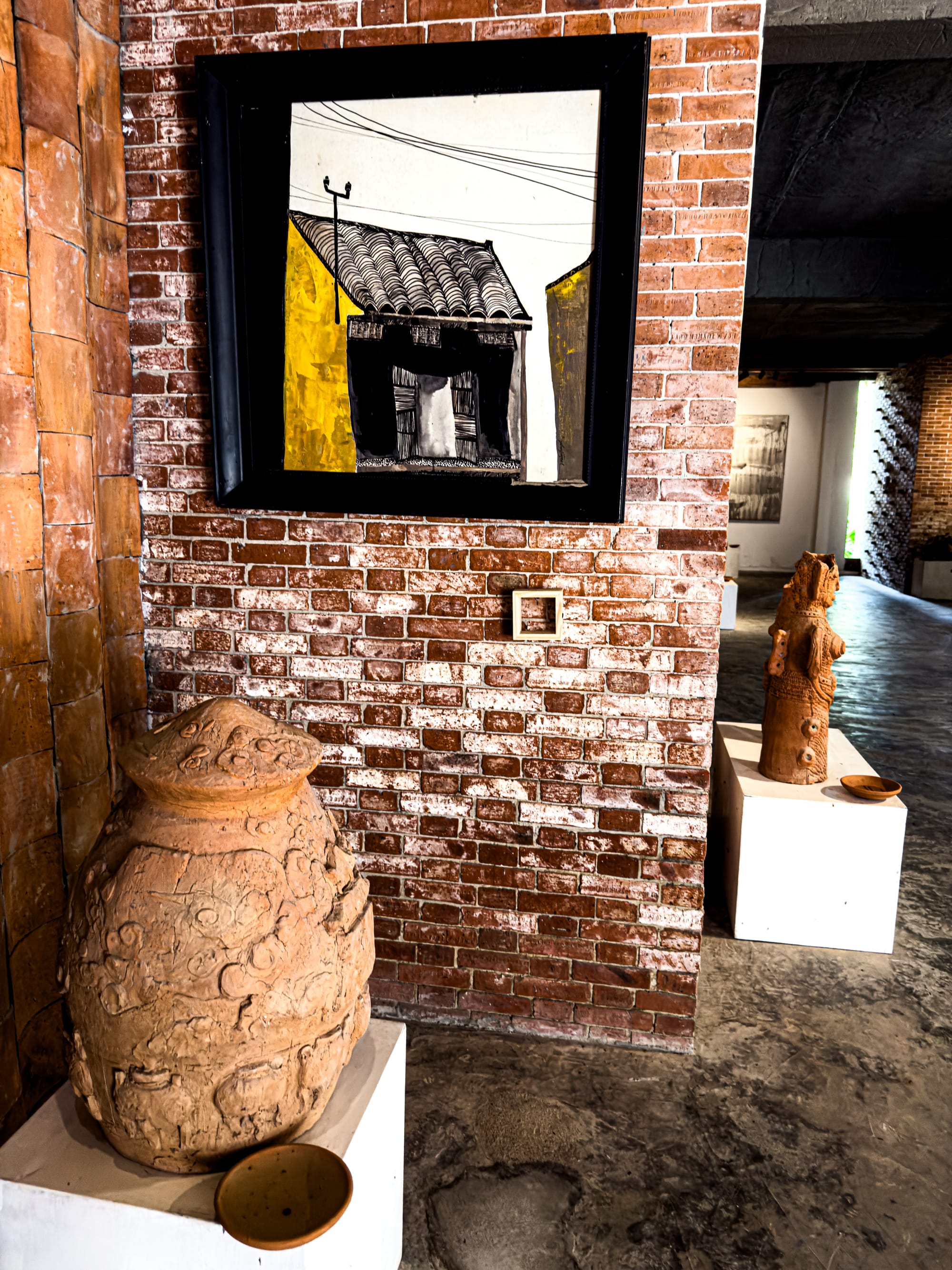
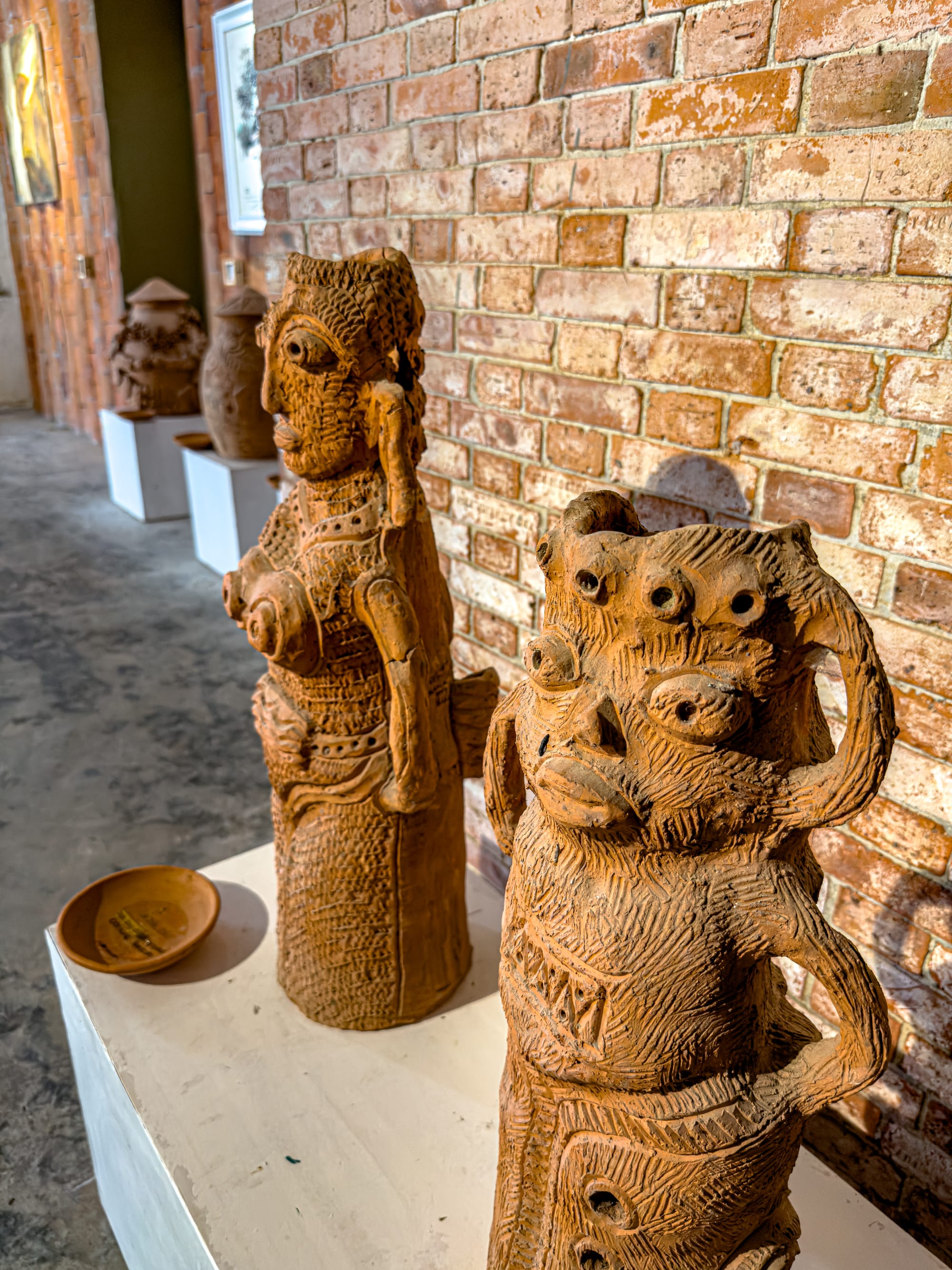
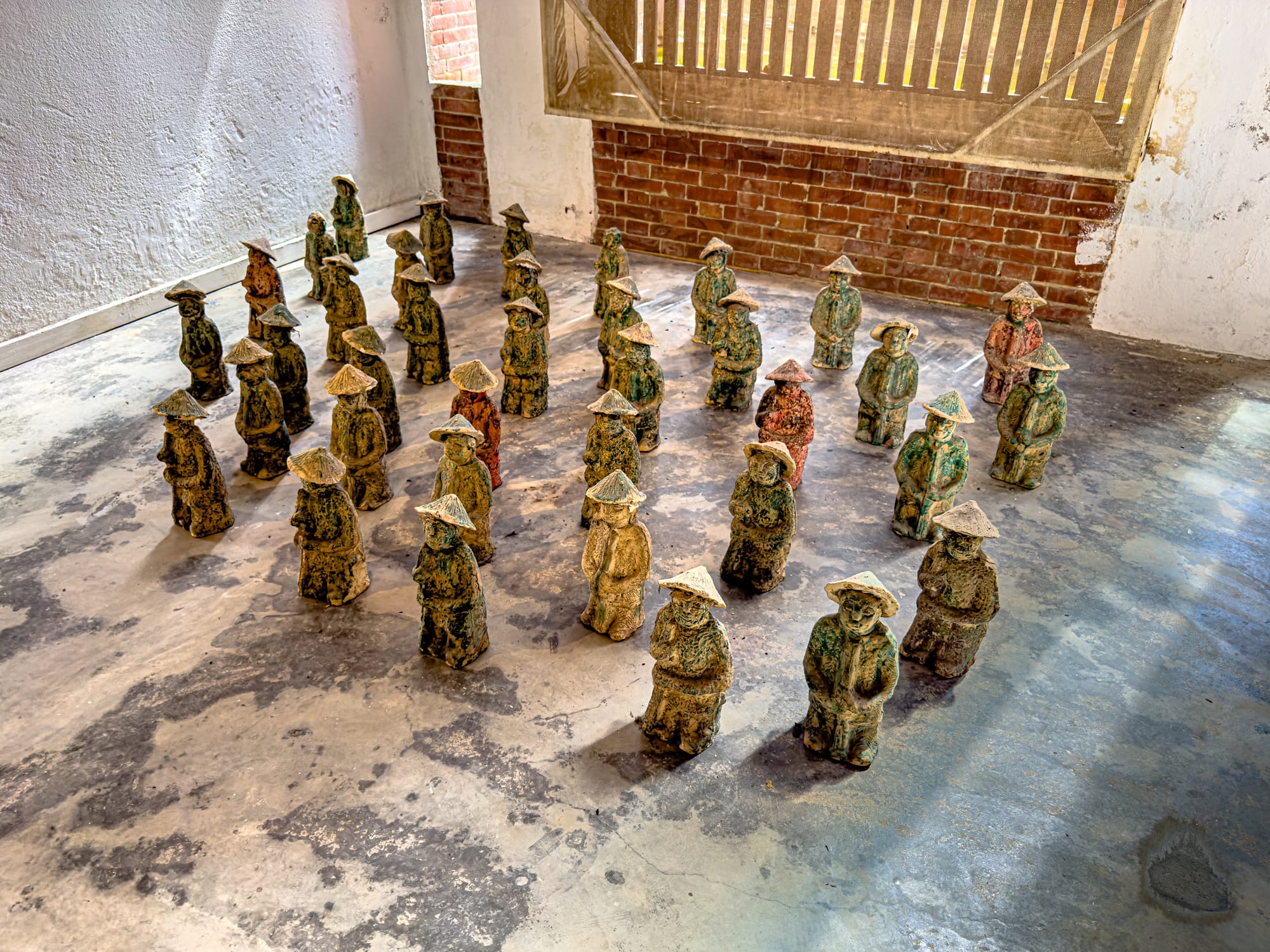
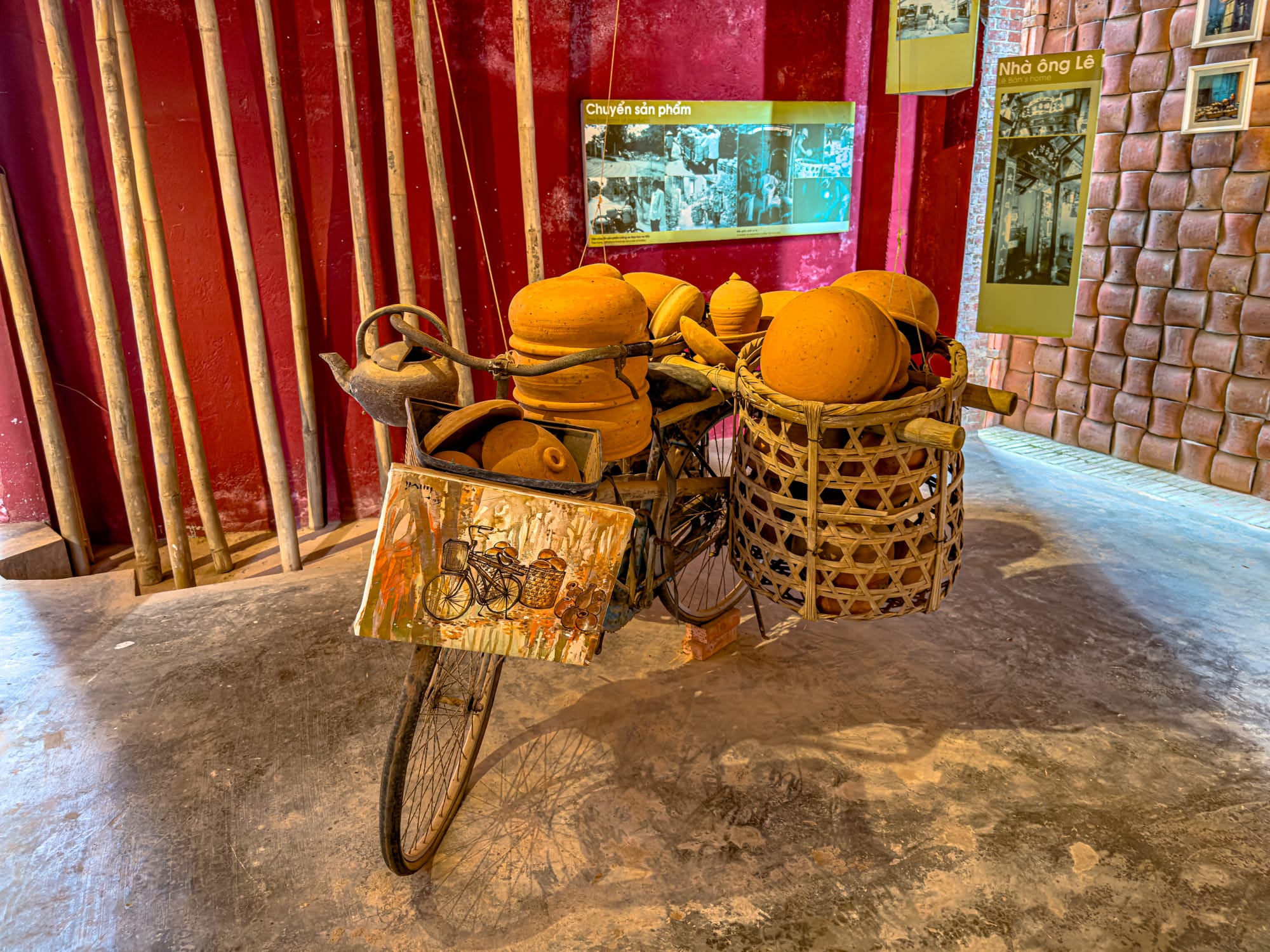
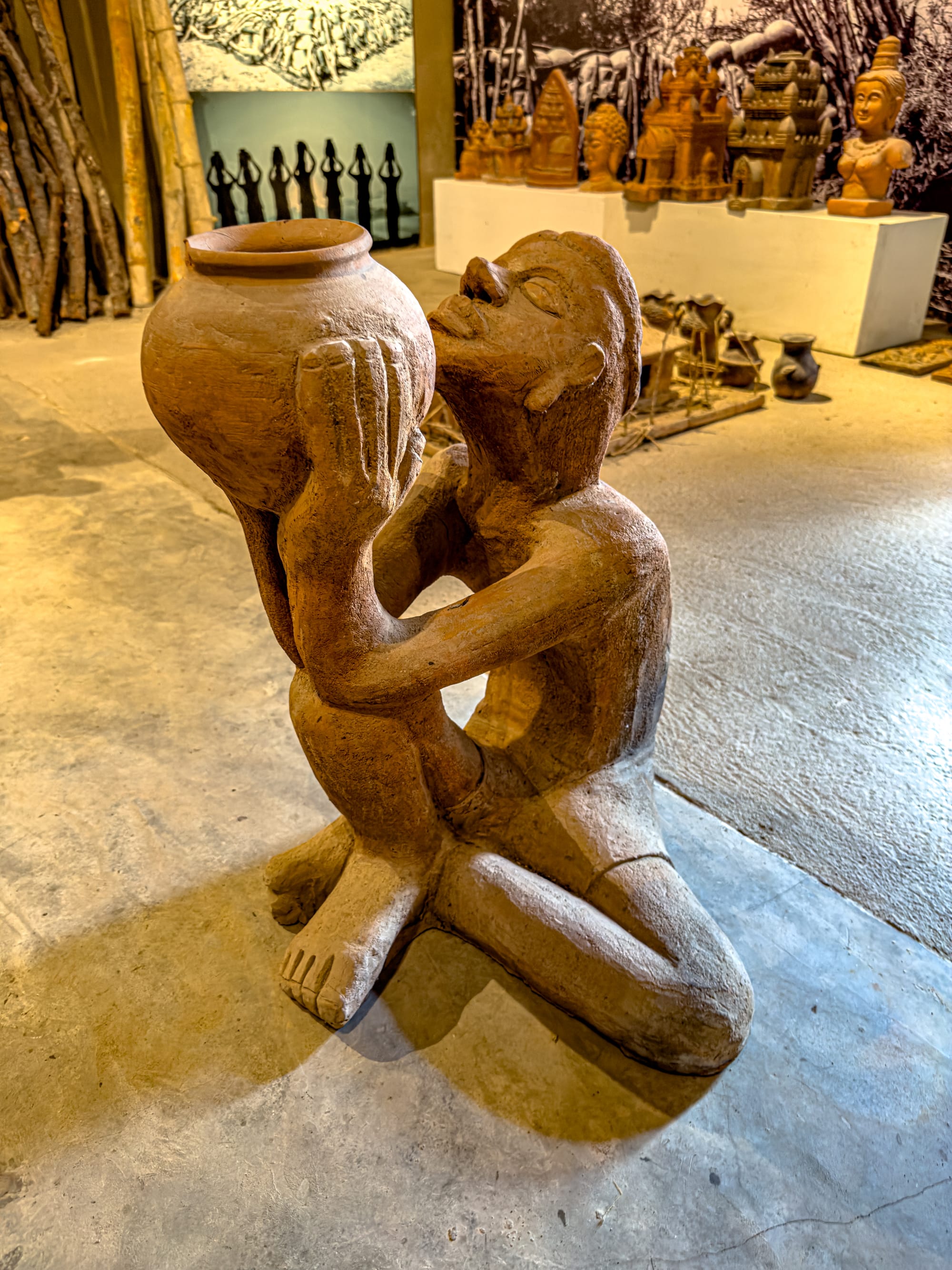
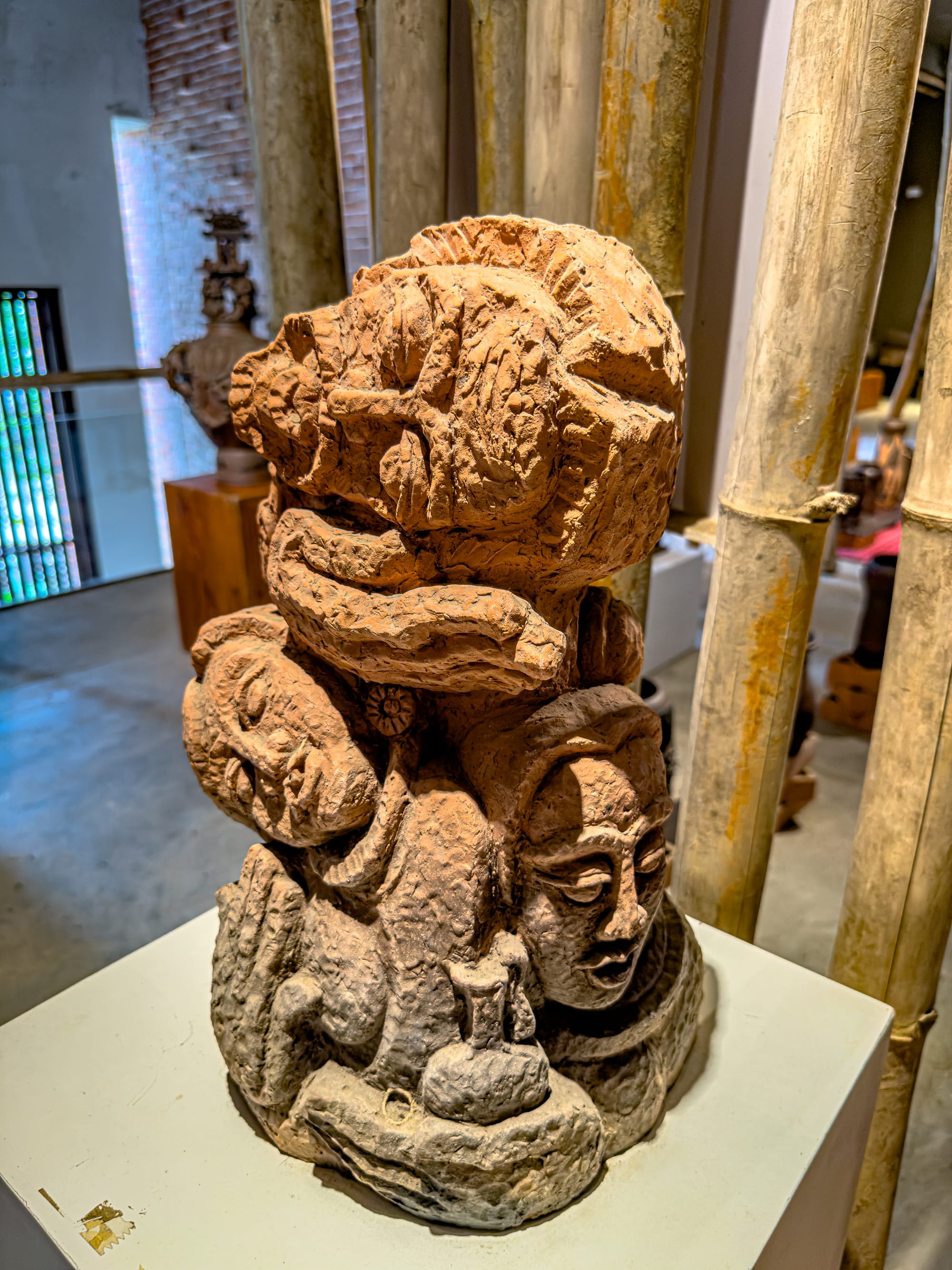
Terracotta sculptures and folk-inspired artworks on display at the museum in Thanh Hà Pottery Village, Hội An
One of the most captivating sections of the museum is the outdoor miniature world made entirely of terracotta. Walking into this gallery feels like stepping into a clay atlas. There is the Sagrada Familia of Barcelona, re-imagined in Vietnamese earth; the Leaning Tower of Pisa; the Pyramids of Egypt; the Notre Dame of Paris. Each is meticulously crafted, scaled down yet rich in detail, a reminder of how craft can both preserve and reinterpret architectural memory.
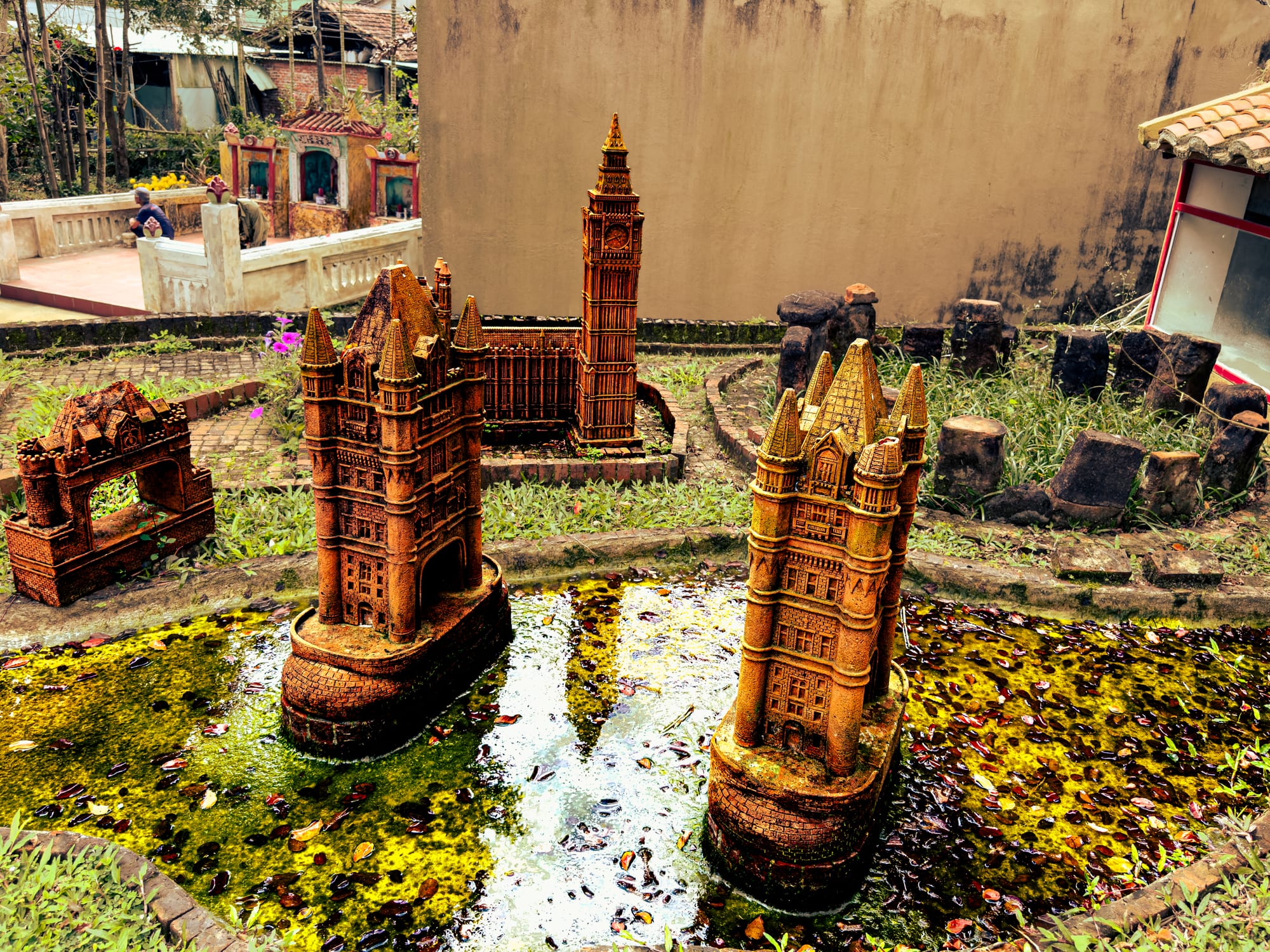
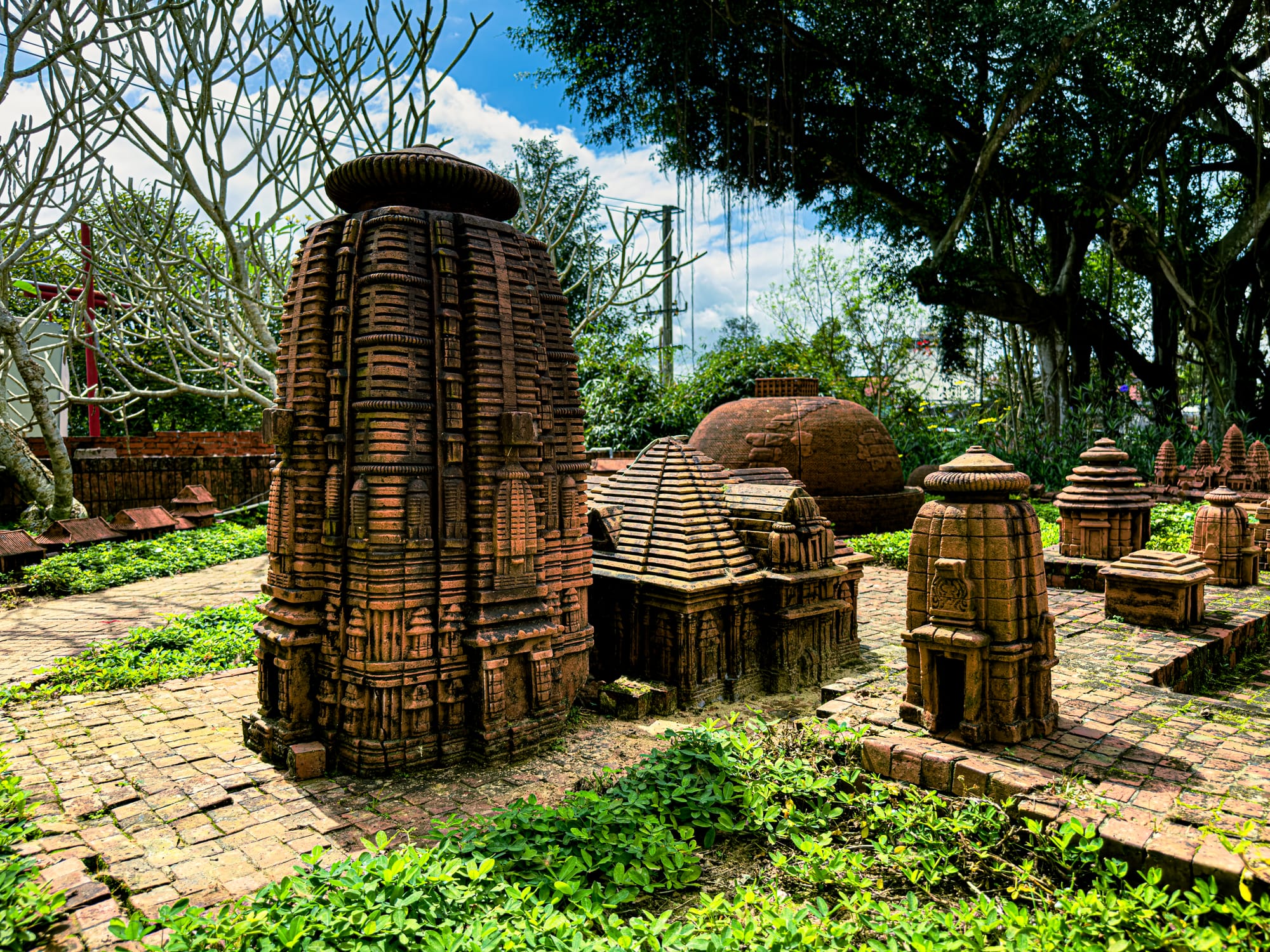
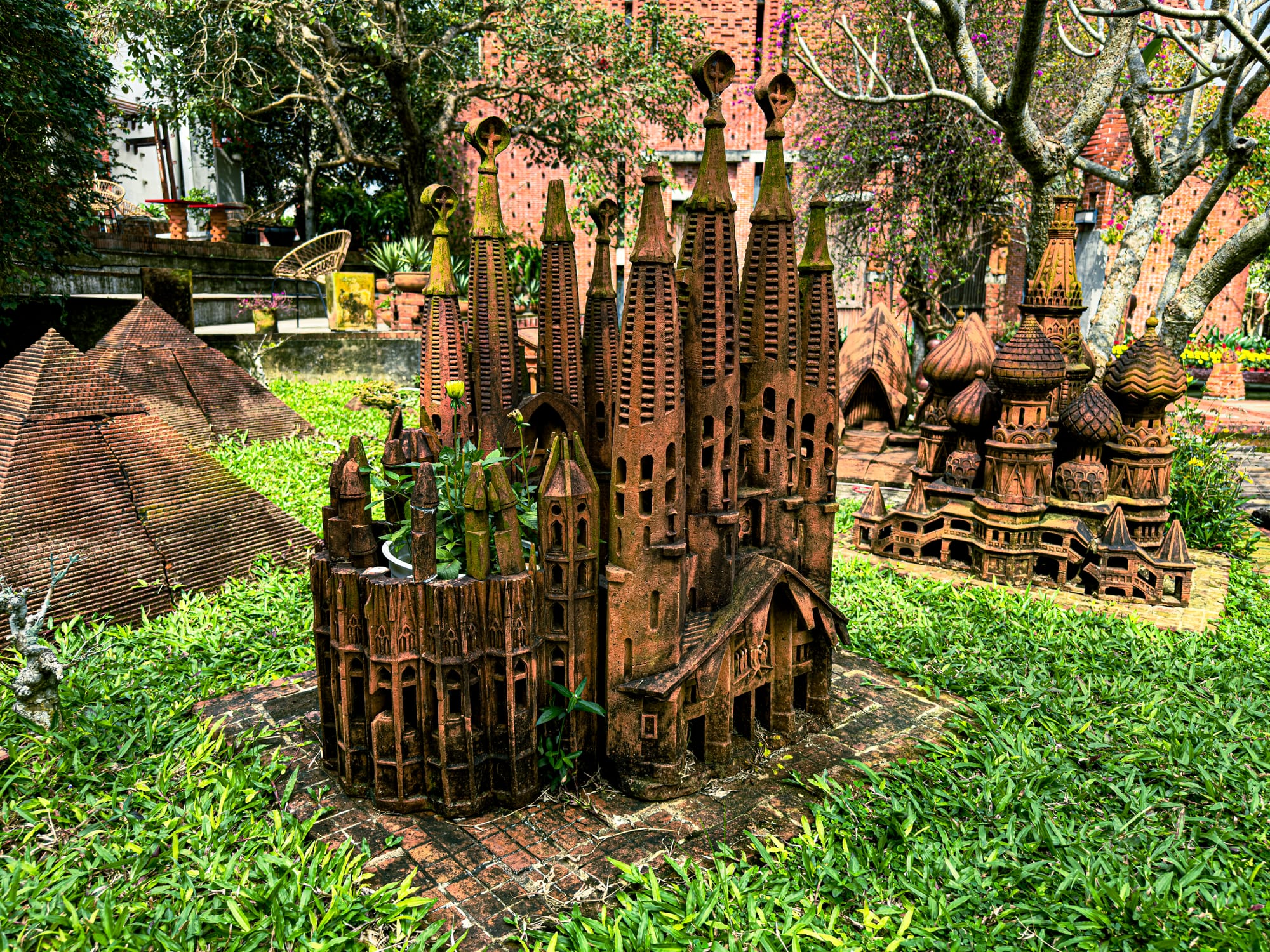
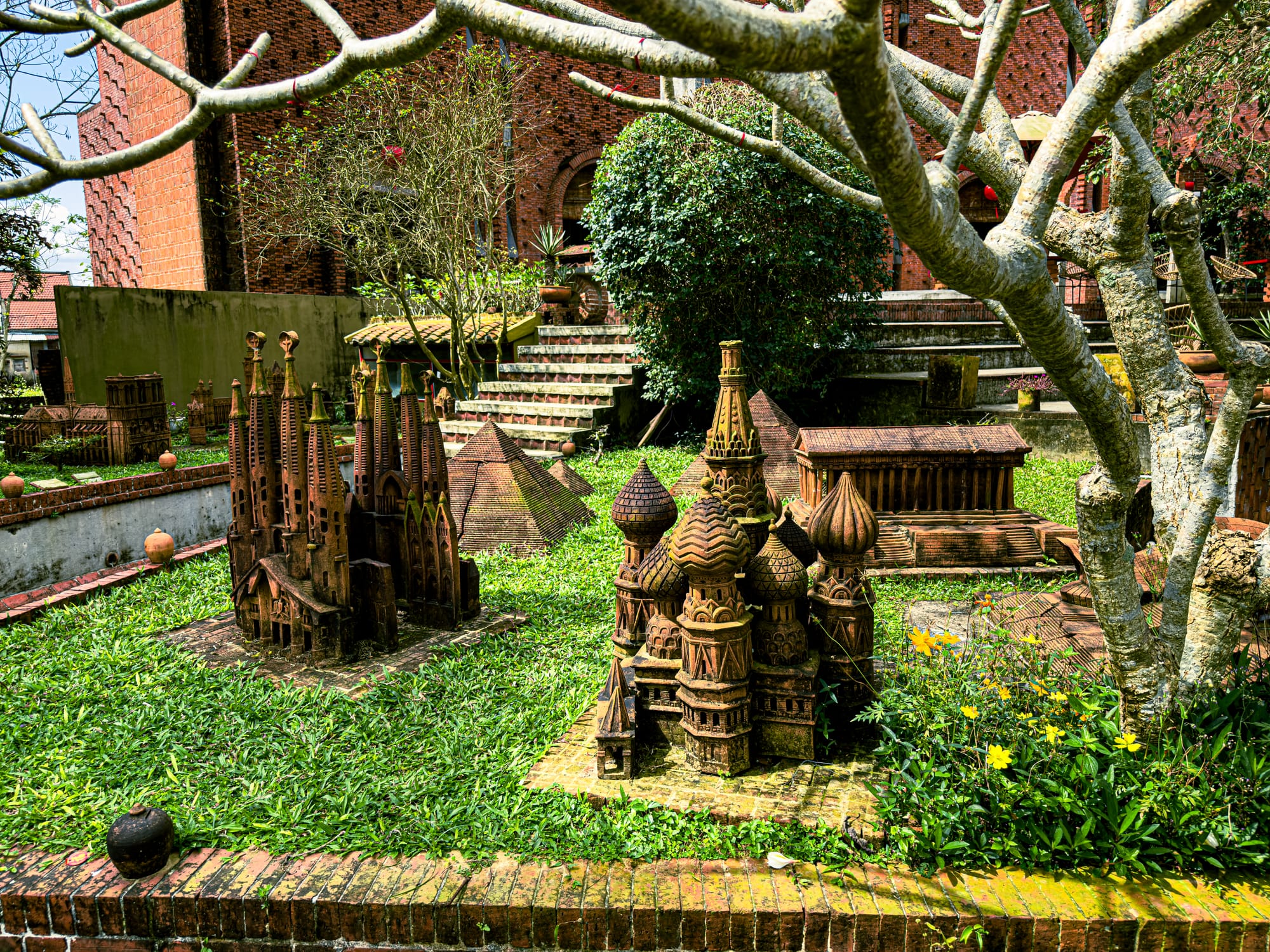
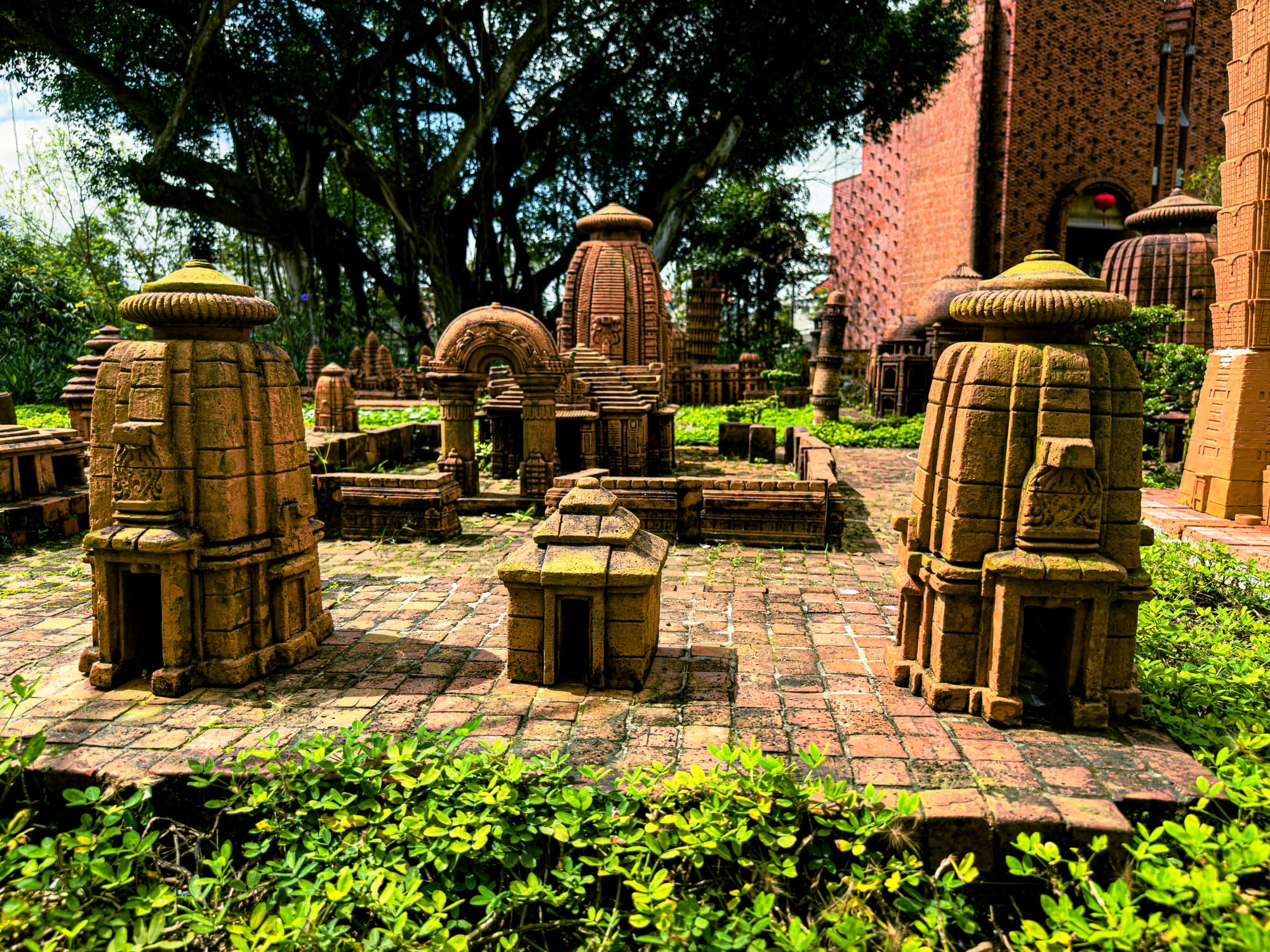
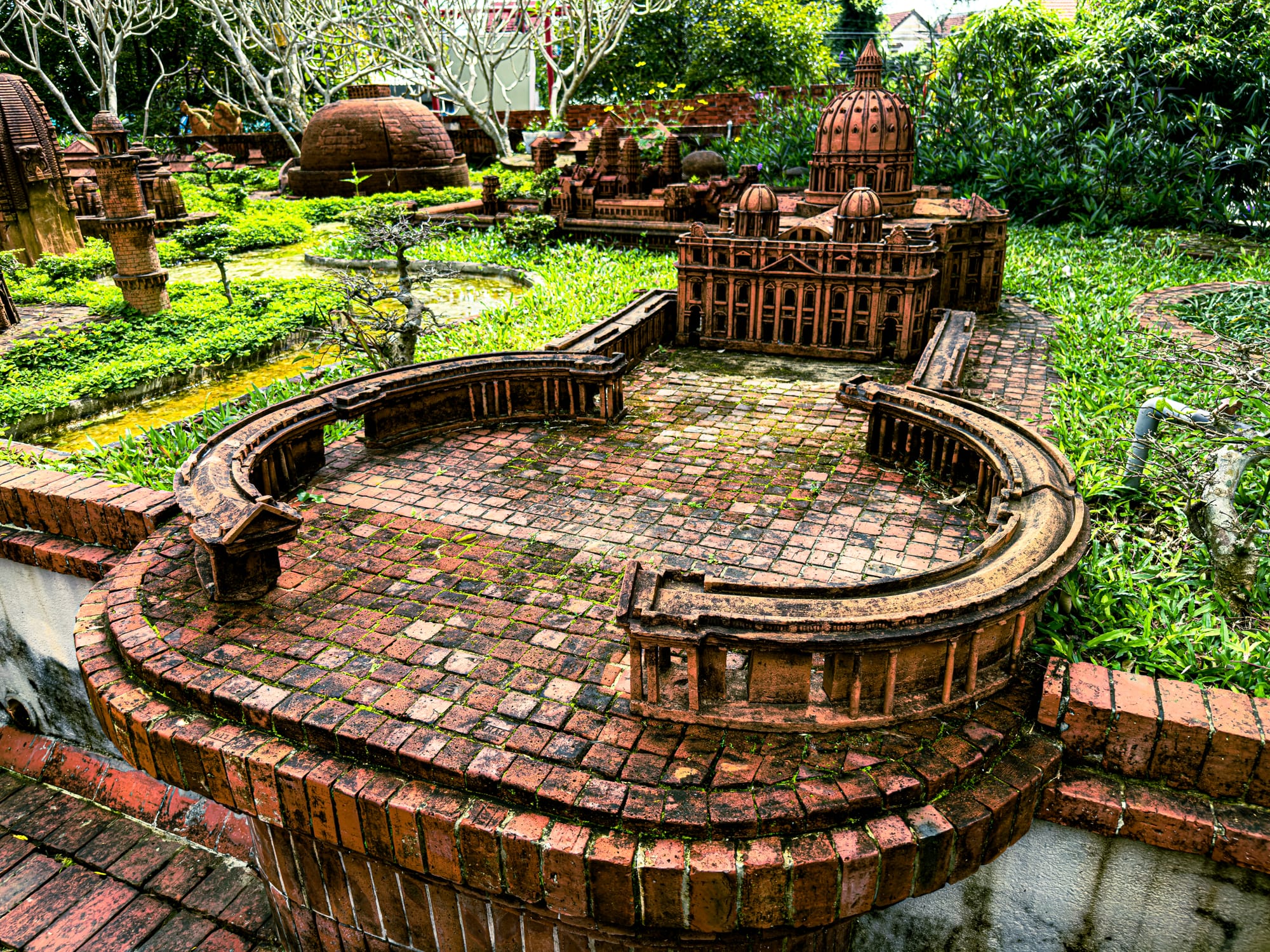
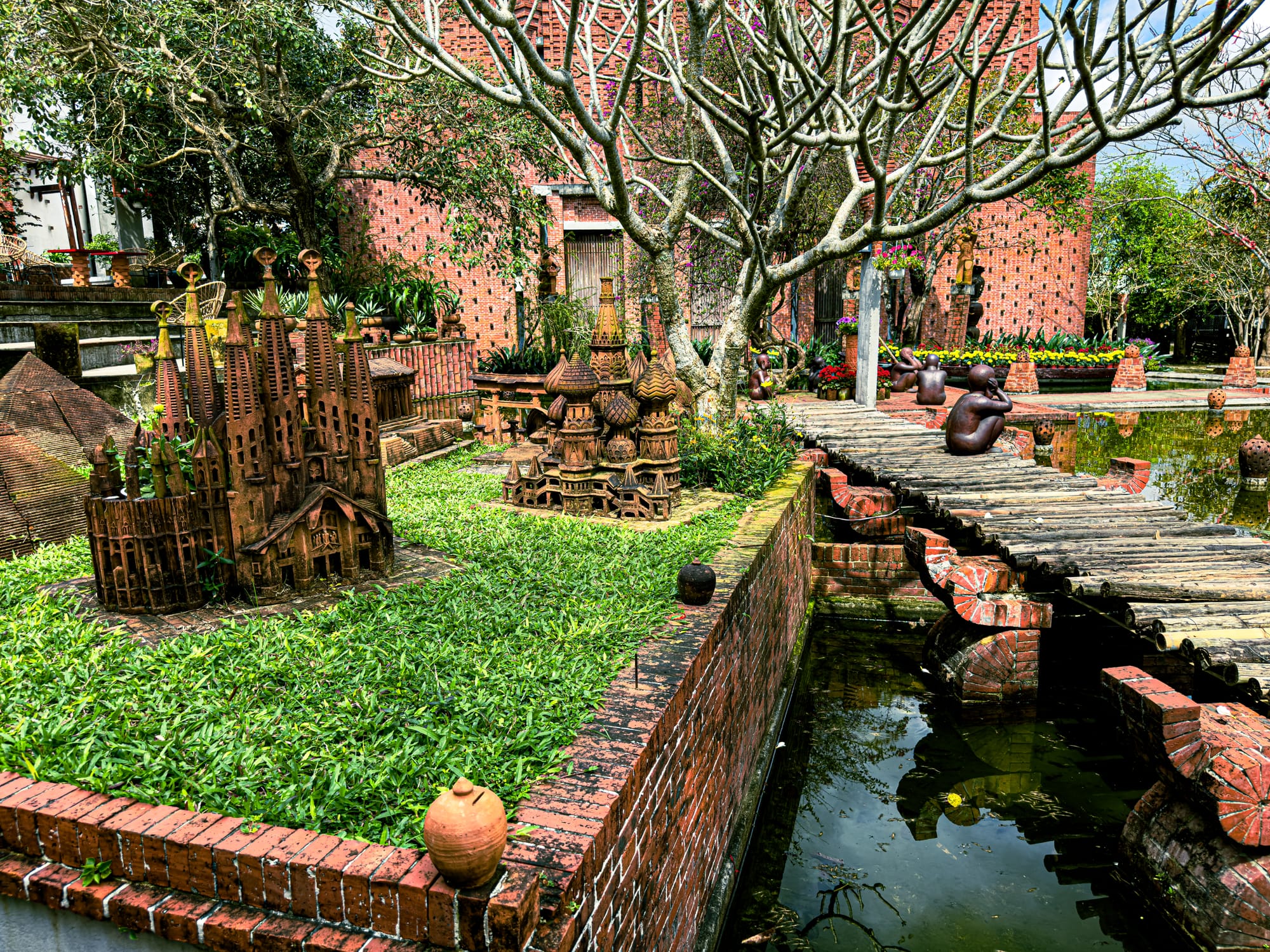
Miniature terracotta replicas of world landmarks at the Terracotta Park in Thanh Hà Pottery Village, Hội An
To stand before these recreations is to realize that clay, so often seen as humble and utilitarian, can also hold the grandeur of the world.
Learning through making
One of the most compelling reasons to visit Thanh Hà is that it offers not only the chance to observe but also to make. Many tours and workshops allow visitors to sit with potters, guided in the process of shaping clay into small vessels or figurines. This tactile encounter changes the way you view the village. It is one thing to see finished products laid out for sale; it is another to feel the resistance of the clay beneath your hands, to sense how much knowledge and patience is required to make even the simplest cup.
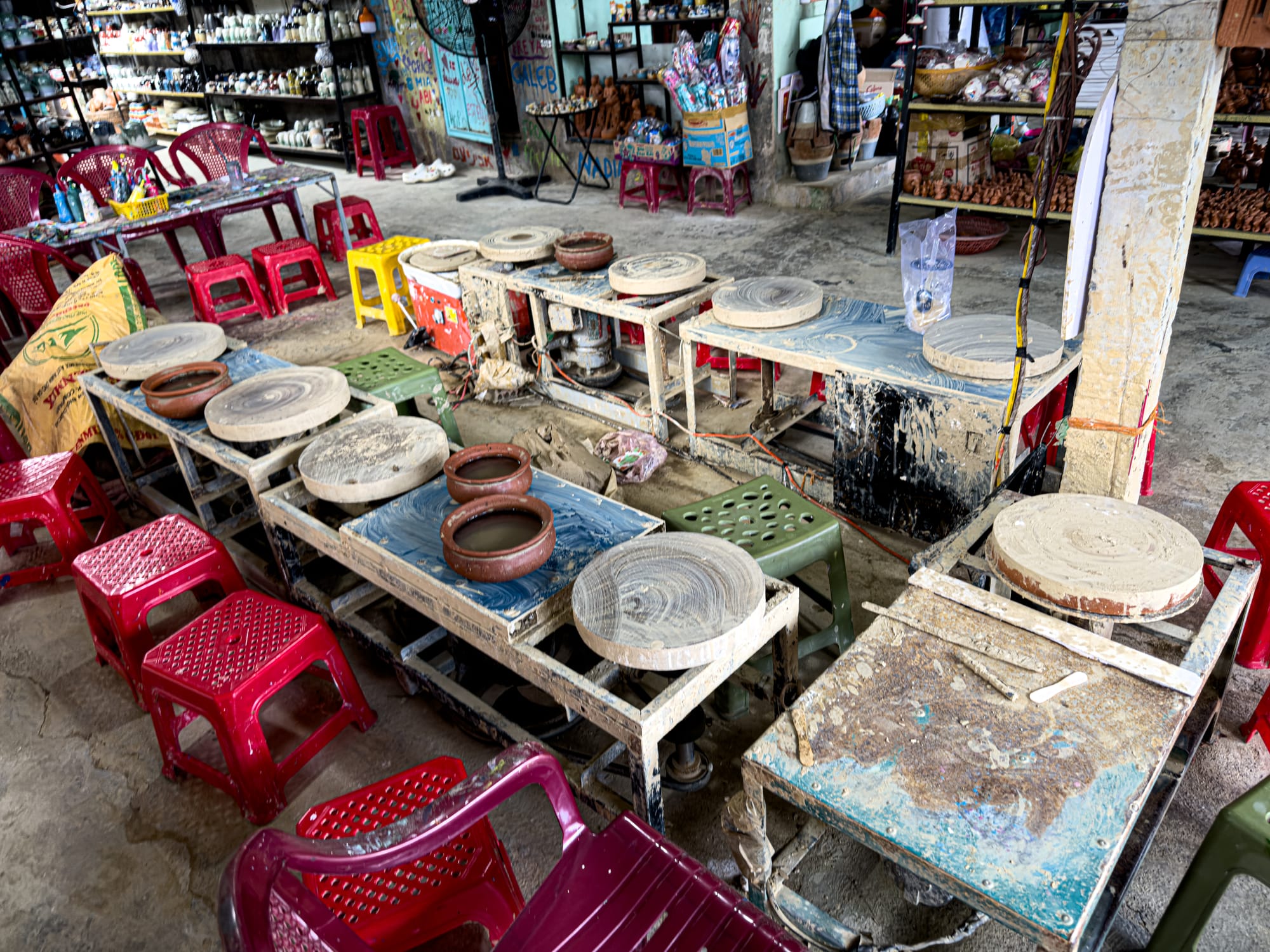
This is where Thanh Hà differs from a static museum. The village itself is alive with practice. Children run between workshops, apprentices learn from elders, and visitors momentarily join this lineage through making. You leave with clay still under your fingernails, a fragment of the village carried away not as a souvenir but as an embodied memory.
The importance of preservation
Thanh Hà is more than a village of craft; it is a place where cultural continuity is being actively preserved. In recent decades, as industrial ceramics and mass production threatened traditional craft, Thanh Hà responded not by abandoning its heritage but by reimagining it. The creation of the museum and terracotta park is part of this strategy: to preserve knowledge, to archive practice, and to invite outsiders into its story.
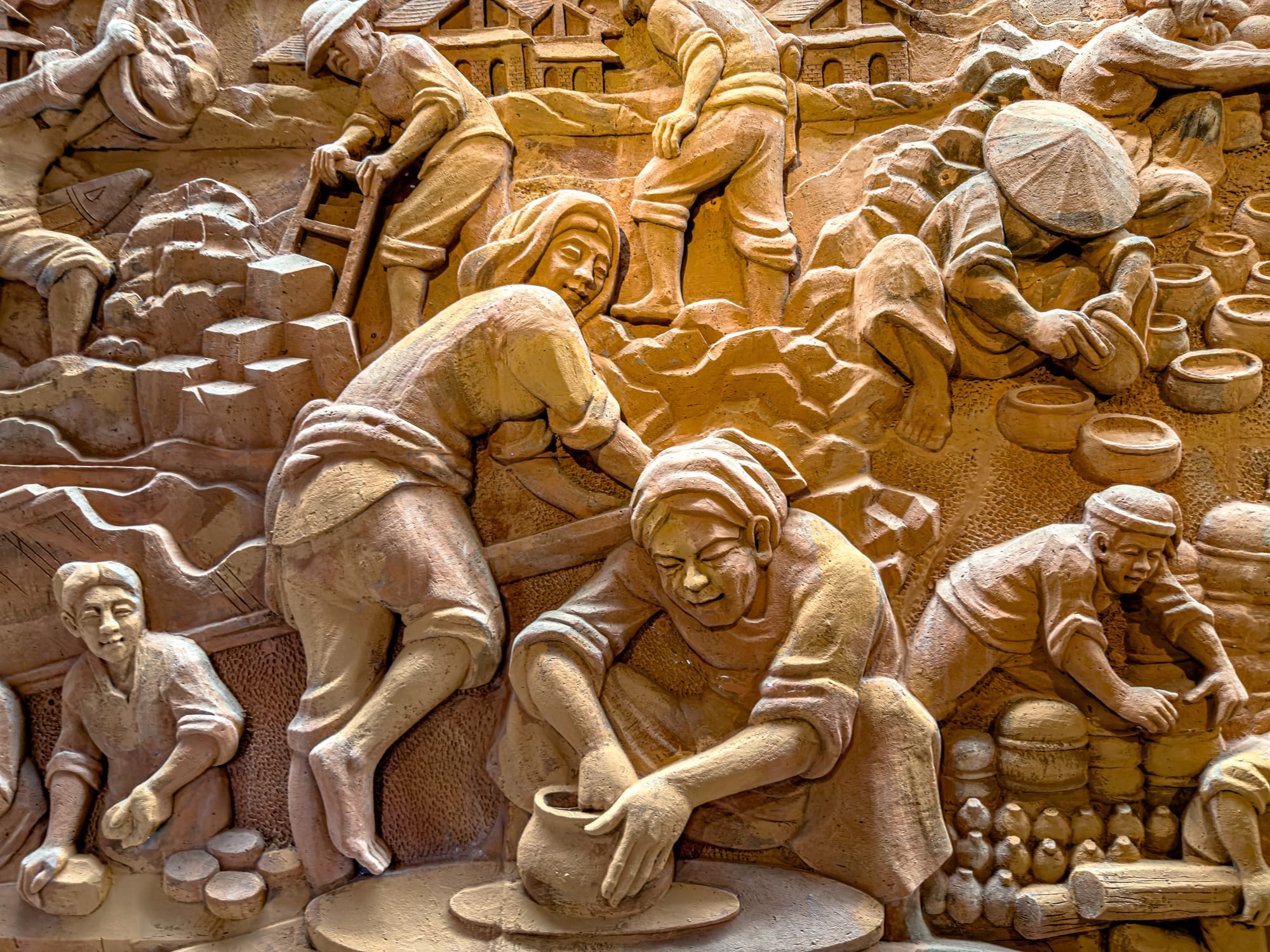
Yet the preservation here is not only institutional. It is lived. Families continue to pass down techniques, potters continue to use ancient tools, and the village remains economically sustained by its craft. Visiting is not simply an act of tourism; it is a way of supporting this continuity. Each pot purchased, each ticket bought, contributes to keeping these hands at work, these kilns alight.
Why visit Thanh Hà
Visiting Thanh Hà is not only about seeing pottery. It is about stepping into a world where earth and fire are still elemental forces of daily life. It is about seeing how a village has survived through centuries of change by holding fast to its craft. It is about understanding how clay, when shaped by human hands, becomes more than material; it becomes culture.
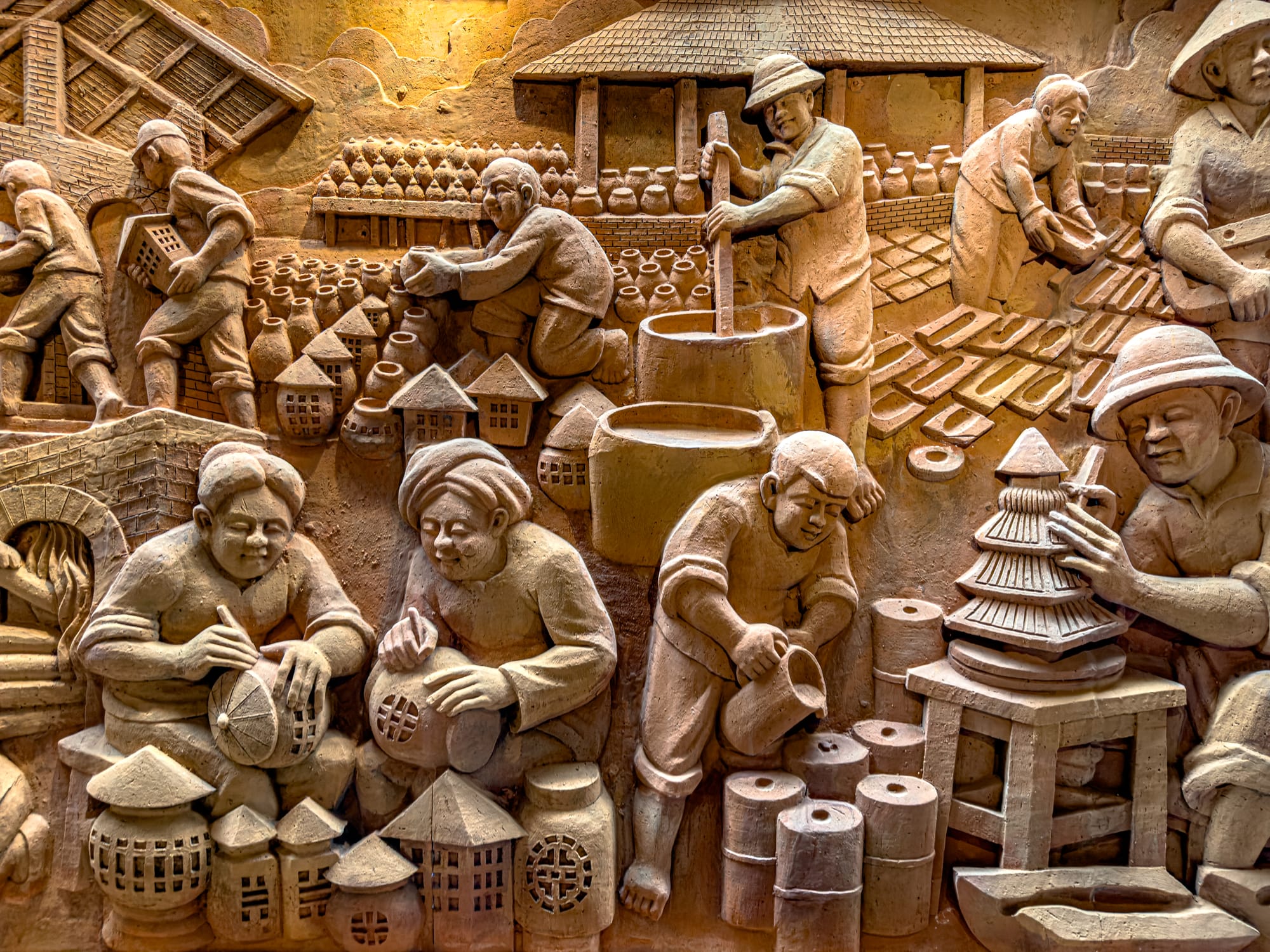
You walk away from Thanh Hà not just with objects but with impressions: the warmth of sun-dried clay, the smell of smoke from the kilns, the sight of a potter’s hands steady at the wheel, the scale of a terracotta cathedral that feels both miniature and monumental. Thanh Hà is a place of both intimacy and scale, of humble vessels and grand recreations.
An invitation to experience
If you are drawn to local craft, to the textures of history, and to the sensory immediacy of clay, Thanh Hà is an essential journey. It is not only for those interested in ceramics, but for anyone who wishes to understand how heritage is preserved through daily work. To see clay spun, fired, and shaped in front of you is to see resilience embodied.

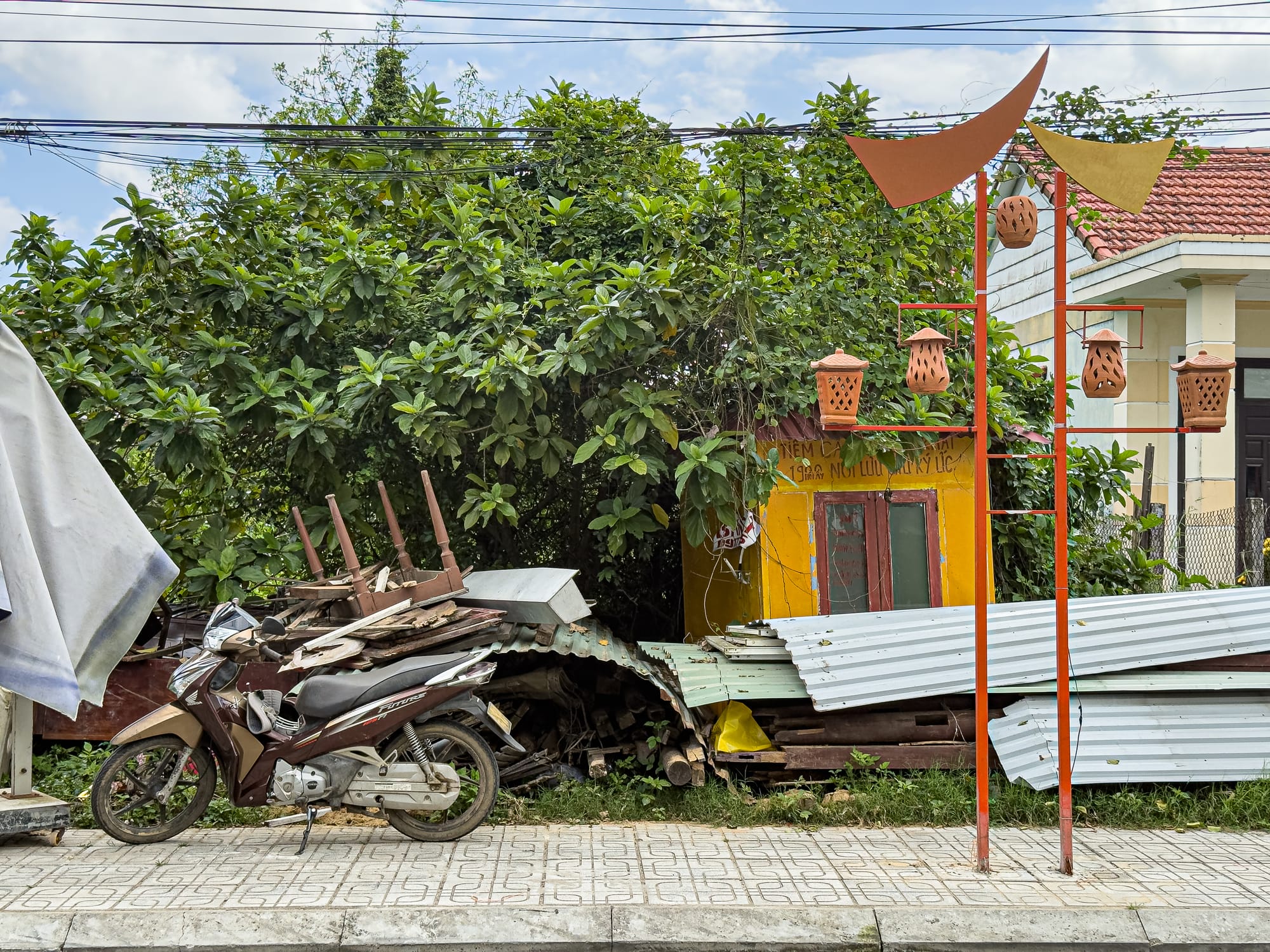
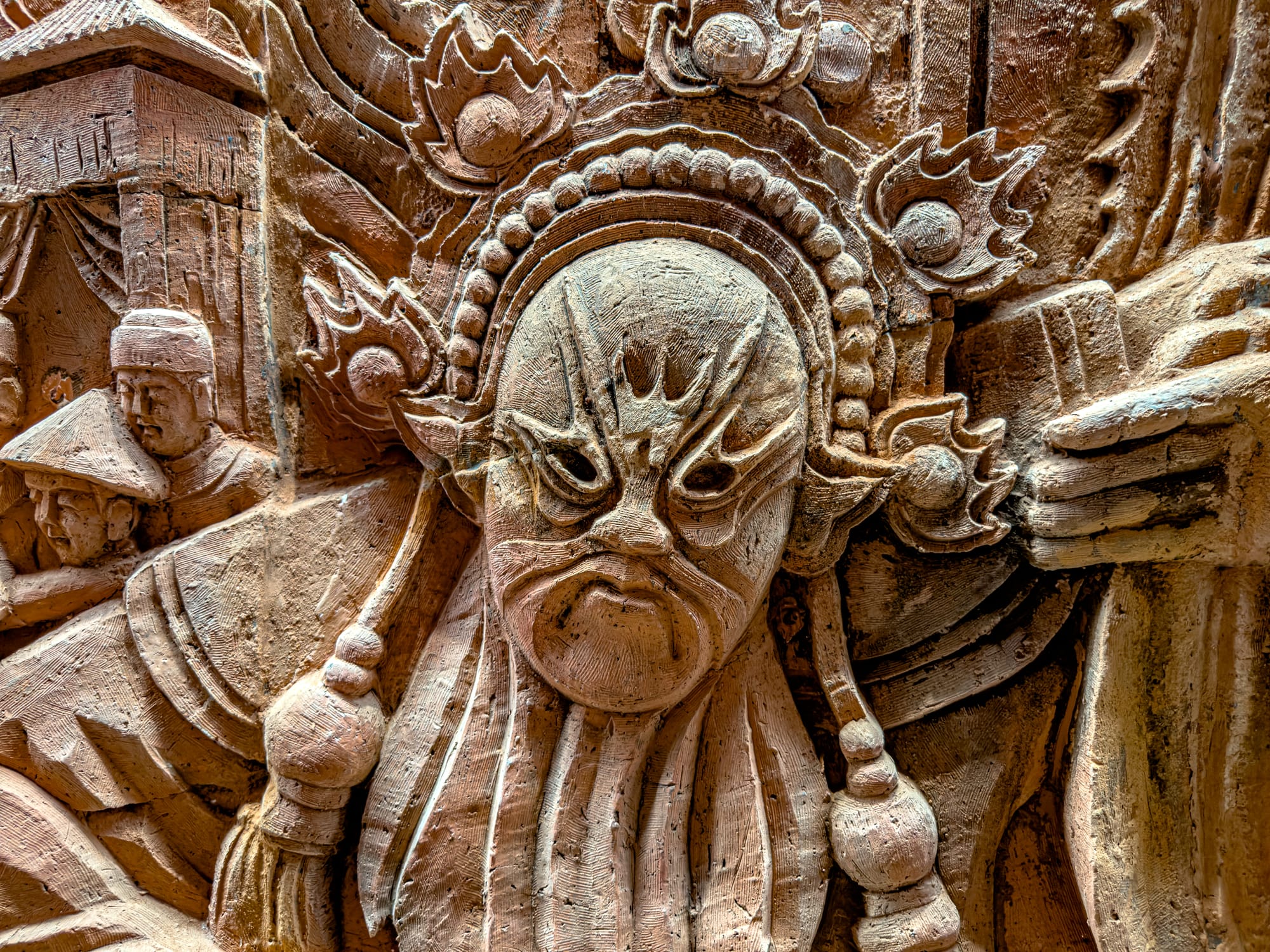
For ease of planning, and for those who want to experience both the living craft and the museum in one flow, this guided tour is recommended. It gathers the threads of the village—craft, history, and making—into a single experience. You leave not only with knowledge, but with memory, texture, and perhaps even a clay creation of your own.






